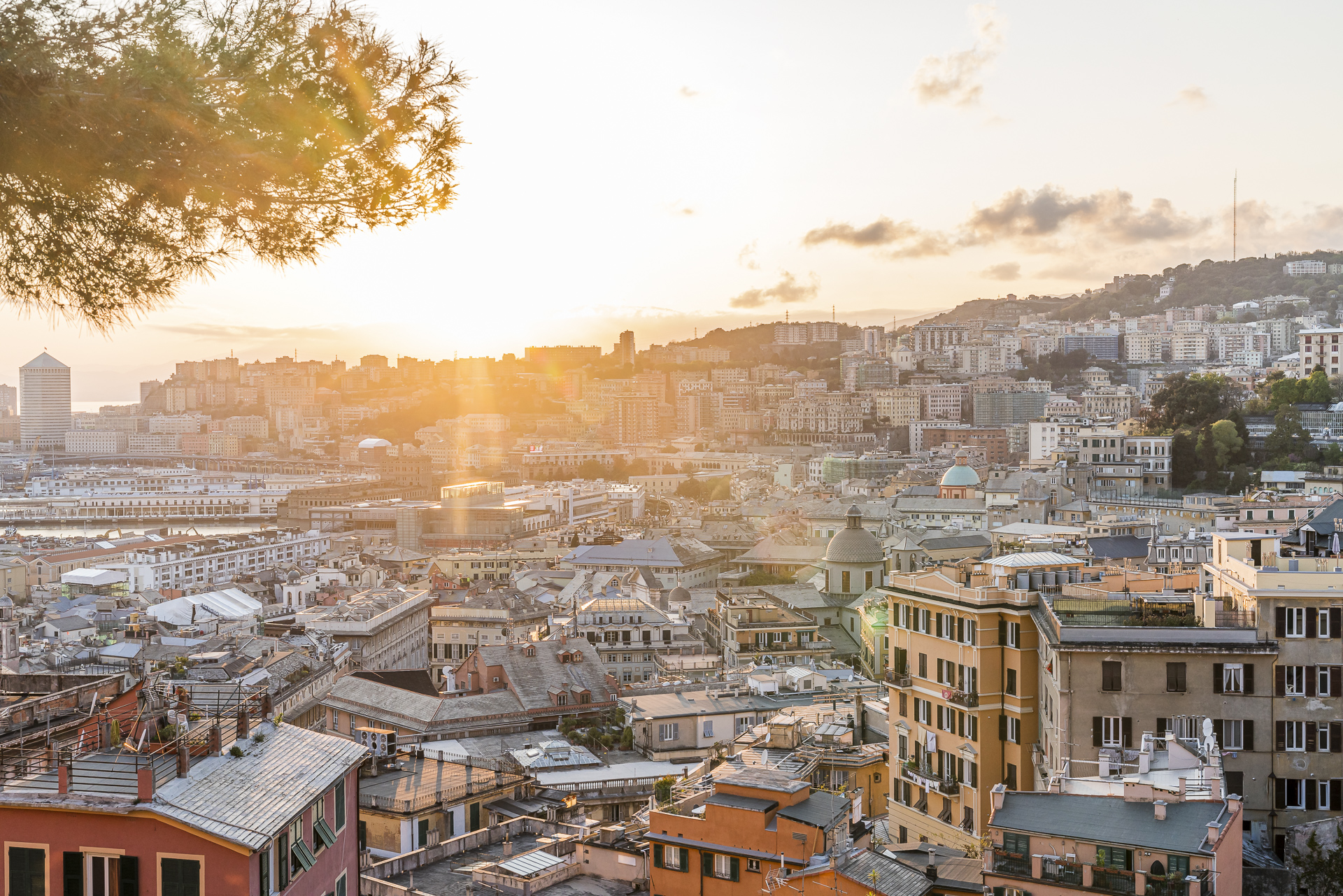
Genoa sights: these are our top tips for the Italian port city
The capital of the Liguria region, located on the Mediterranean Sea, is not in the same league as Rome, Florence or Venice in terms of tourism. But that’s exactly what makes Genoa so charming. Those who come here will be surprised – with an extensive old town, magnificent palaces, beautiful city beaches and all kinds of delicious culinary specialties. In short: a detour to Genoa is worth it!
3 days in Genoa – these are our highlights
We travelled from Zurich to Genoa by train and spent three full days in the Italian port city over Easter. To get you started, here are our highlights:
- Just before sunset, enjoy the panoramic view over the city from the Belvedere Castelleto.
- When the weather is nice, stroll along Corso Italia
- Dinner at the Hostaria Ducale: a fine dining experience in a class of its own
The Genoa sights at a glance
The economic boom of what is now Italy’s sixth-largest city is closely linked to its rise to maritime power. And so many of today’s sights have their origins in the eras when Genoa experienced its heyday as a seafaring nation. This is also the case with the extensive old town with its labyrinth of alleys that stretches around the cathedral of San Lorenzo. This is also the birthplace of Christopher Columbus. The patrician houses and palaces of the “Strade Nuove”, now classified as a UNESCO World Heritage Site, date back to the 16th century and bear witness to the wealth that Genoa had acquired over the course of the Middle Ages as a rising maritime power. You can learn more about the historical background of the seafaring nation of Genoa in the interestingly constructed Galata Maritime Museum.
Another well-known personality of Genoa is Renzo Piano. The reconstruction of the Porto Antico in the course of Expo ’92 was carried out according to the plans of the star architect. After the collapse of the Morandi Bridge (a recent tragedy), he also donated a new bridge to his hometown in record time.
It may come as a surprise that in Genoa you can leave the lively old town streets behind and immerse yourself in nature in just a few minutes. Be it a short break on one of the city beaches, a walk along Corso Italia to Nervi or a sporty hike along the second longest fortress wall in the world.
Genoa Map
For a better overview, you will find all the sights, museums, restaurants mentioned in the article as well as our hotel tip geographically located in the following map. I hope you enjoy planning your city trip to Genoa.
Genoa Day 1
Depending on the time of day, there are attractive train connections from Zurich to Genoa almost every half hour, but only a direct connection once a day. We used this for the journey and arrived punctually shortly before 16:00 o’clock at the Porta Principe train station. The motto: check in quickly at the hotel and then dive directly into the alleys of the old town.
Explore Piazza Ferrari & Piazza Matteo
The first walk through the old town took us across the medieval city center to the Piazza de Ferrari. With its monumental fountain, the square at the interface between the old town and “modern” Genoa is a welcome landmark. At the same time, the piazza, lined with magnificent buildings, is an imposing sight.
Just one street away, the small and at first glance rather inconspicuous Piazza San Matteo forms a quiet counterpoint to the lively Piazza Ferrari. A few metres from Piazza San Matteo, the cocktail bar “Les Rouges Cucina & Cocktails”, located above an antique dealer, is the perfect aperitivo location to toast a great time in Genoa.
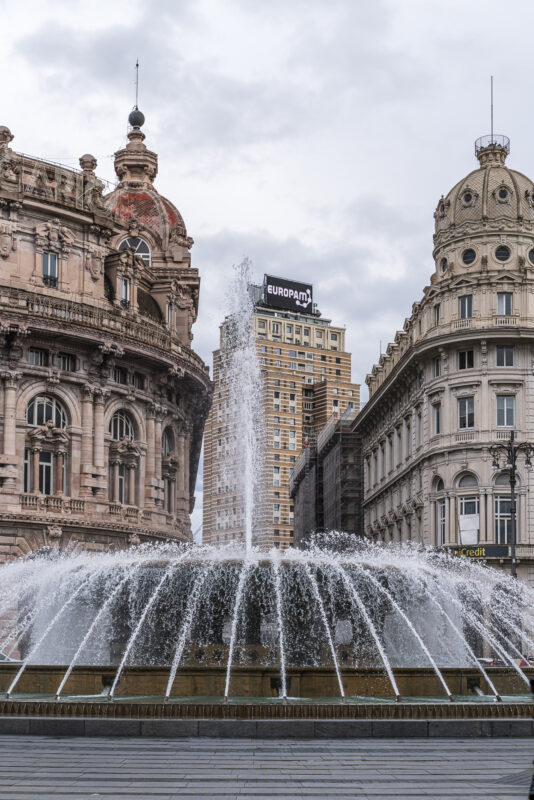
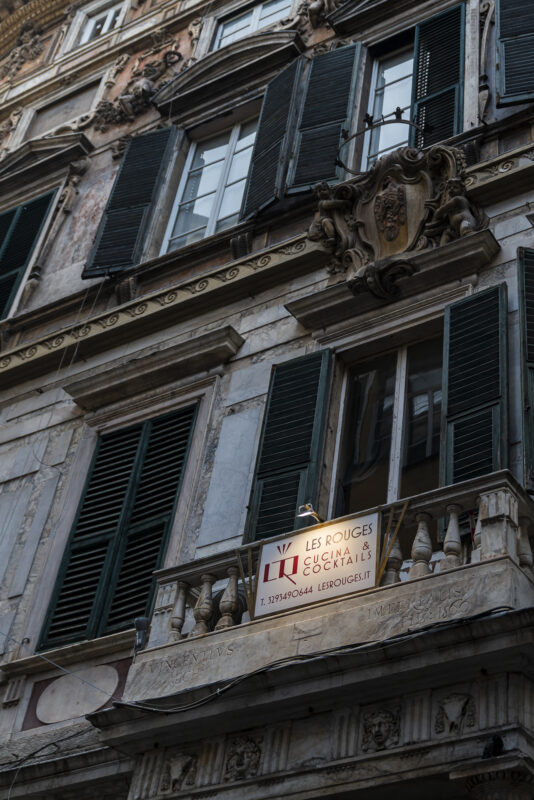
Les Rouges Cucina & Cocktails | Campetto, 8a/Primo Piano | Tuesday to Sunday from 6:00 p.m. | Tip: be there at 6:00 p.m. without a reservation!
2. Taste the culinary specialties of Genoa
There are countless restaurants in Genoa and many of them are good places to eat! If you would like to stop at a certain place, we recommend that you make a reservation in advance. We had deliberately not reserved everything in advance and then had to realize that it would have been worth it – if we had done the research. In well-rated, popular restaurants such as the Trattoria dell’Acciughetta, for example, there was no more room spontaneously. Nevertheless, the culinary delights were not neglected. On the first evening, I tried Genoa’s most famous specialty at Ristorante Soho: Pesto Genovese! And the friend enjoyed “Risotto Nero con Sepia” with basil and saffron.
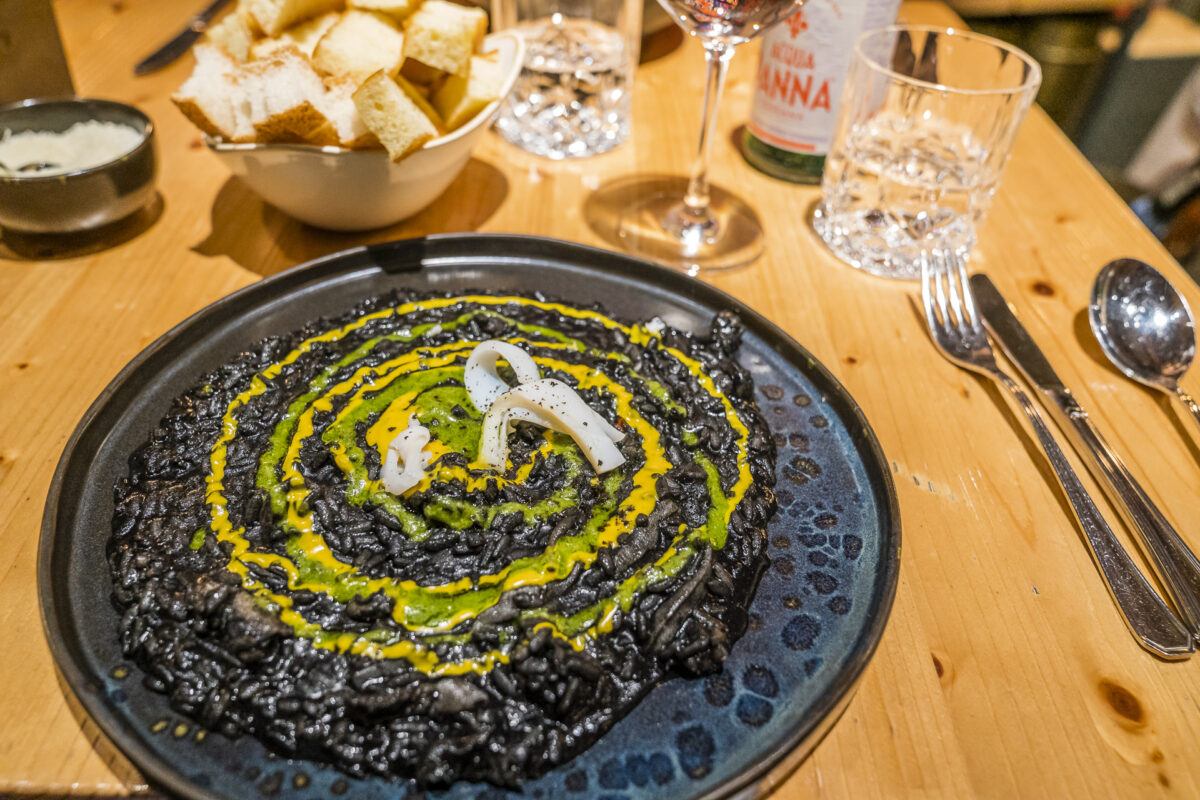

Ristorante Soho | Via al Ponte Calvi, 20 R | open daily 12:00 p.m. to 11:00 p.m. | Online reservation possible via Fork | Further information: ristorantesoho.it
Genoa Day 2
The next morning, Genoa greeted us with a bright blue sky and pleasant temperatures. The perfect conditions for a jam-packed day of sightseeing.
3. Wander through the caruggi of the old town
With an area of over 100 hectares, Genoa’s old town is one of the largest city centres in Europe dating back to the Middle Ages. The old town is accessible with many winding narrow streets – called “caruggi”. So there are countless ways. And even if the alleys are not “photogenic” in the classic sense (much too narrow, many crumbling, dilapidated facades (unfortunately!) and scaffolding everywhere), it is a lot of fun to explore this labyrinth just by the nose.
Sooner or later you will pass a caffè. Our favourite: the hip Tazze Pazze. There are also some seats here, from where you can watch the hustle and bustle in a wonderfully relaxed way.
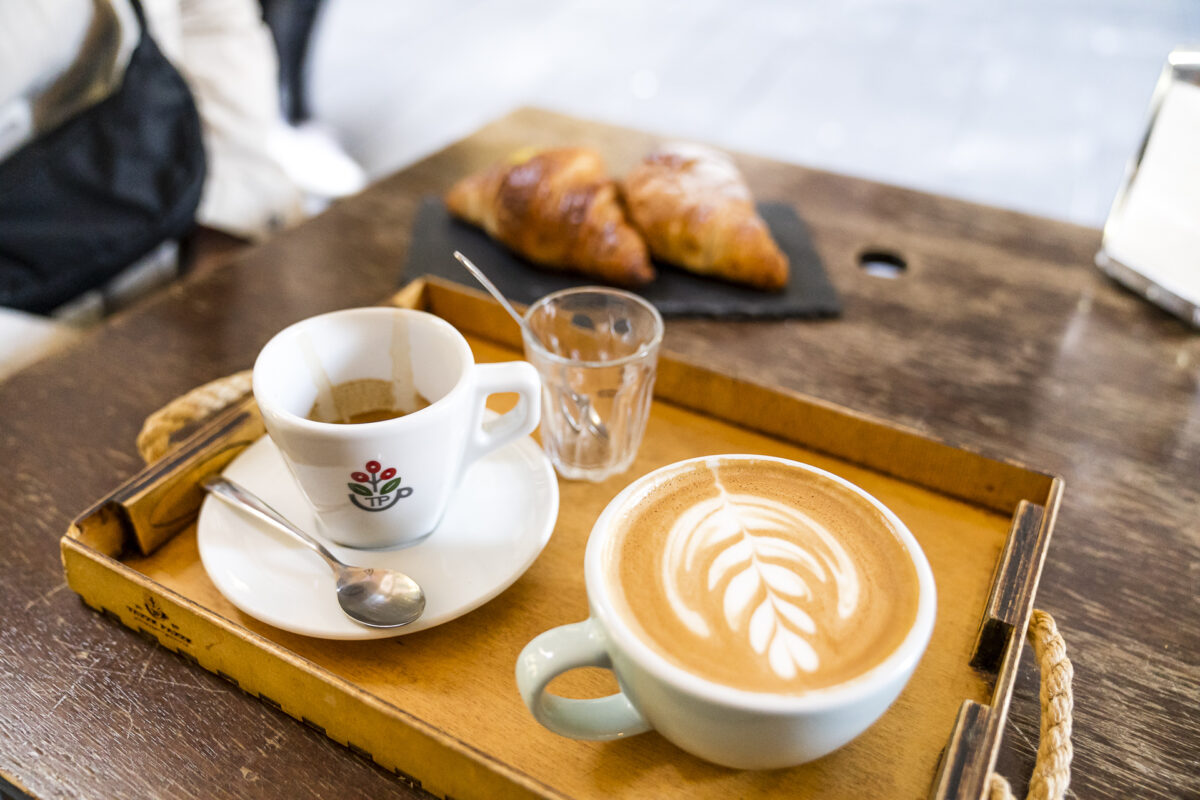
Among the fixed points on a tour of the old town are the Cathedral of San Lorenzo with its impressive black-and-white striped marble façade and the Porta Soprana – once a city gate. Right next to it is the reconstructed childhood home of Christopher Columbus (Casa die Colombo).
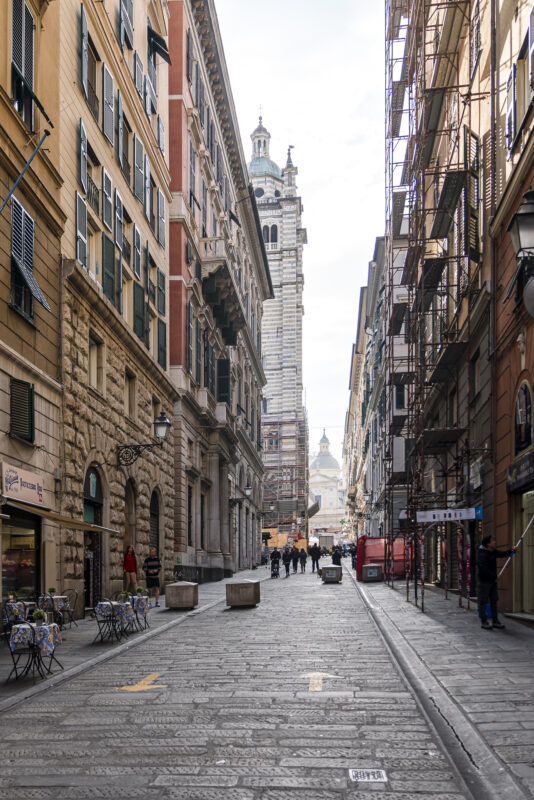
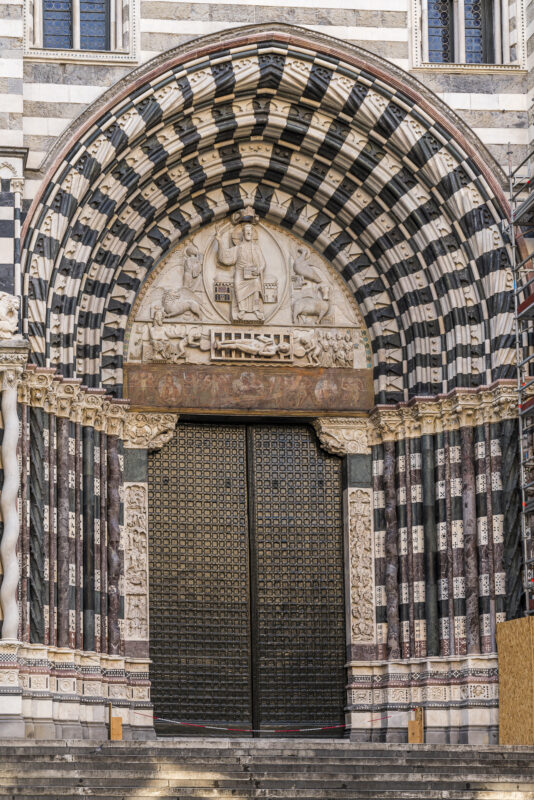
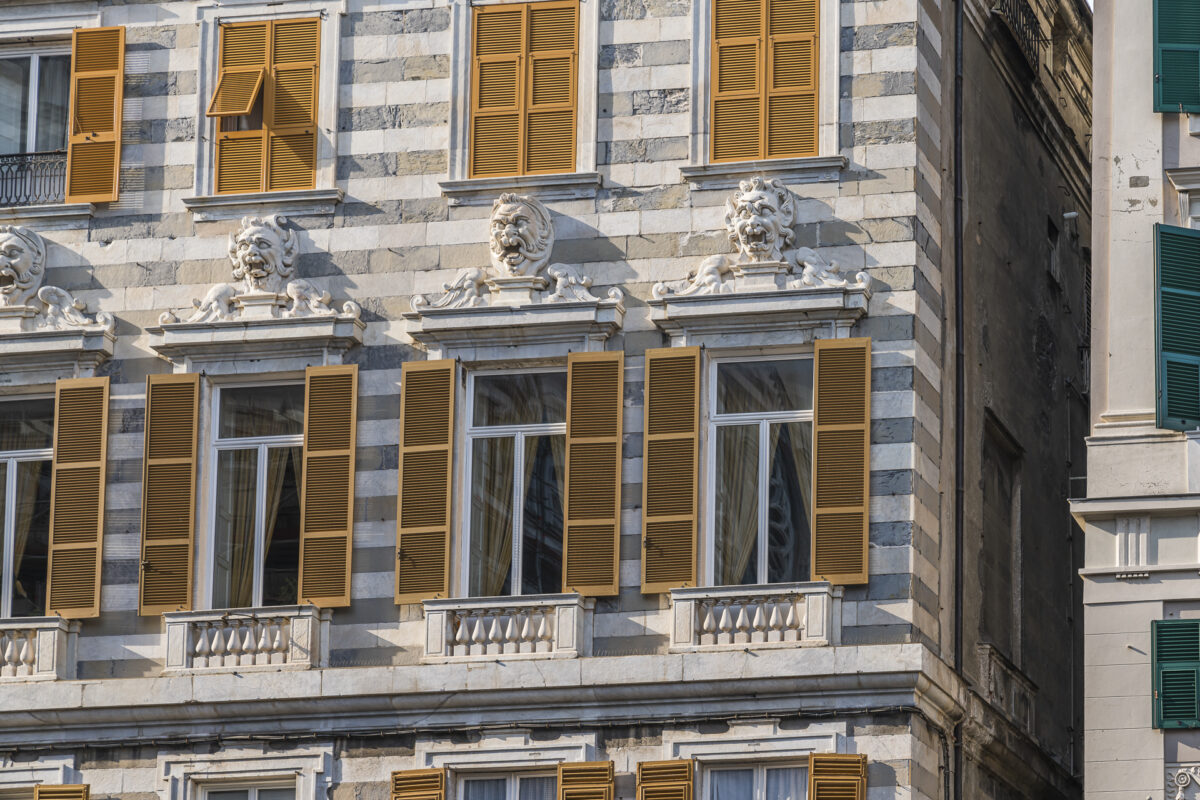
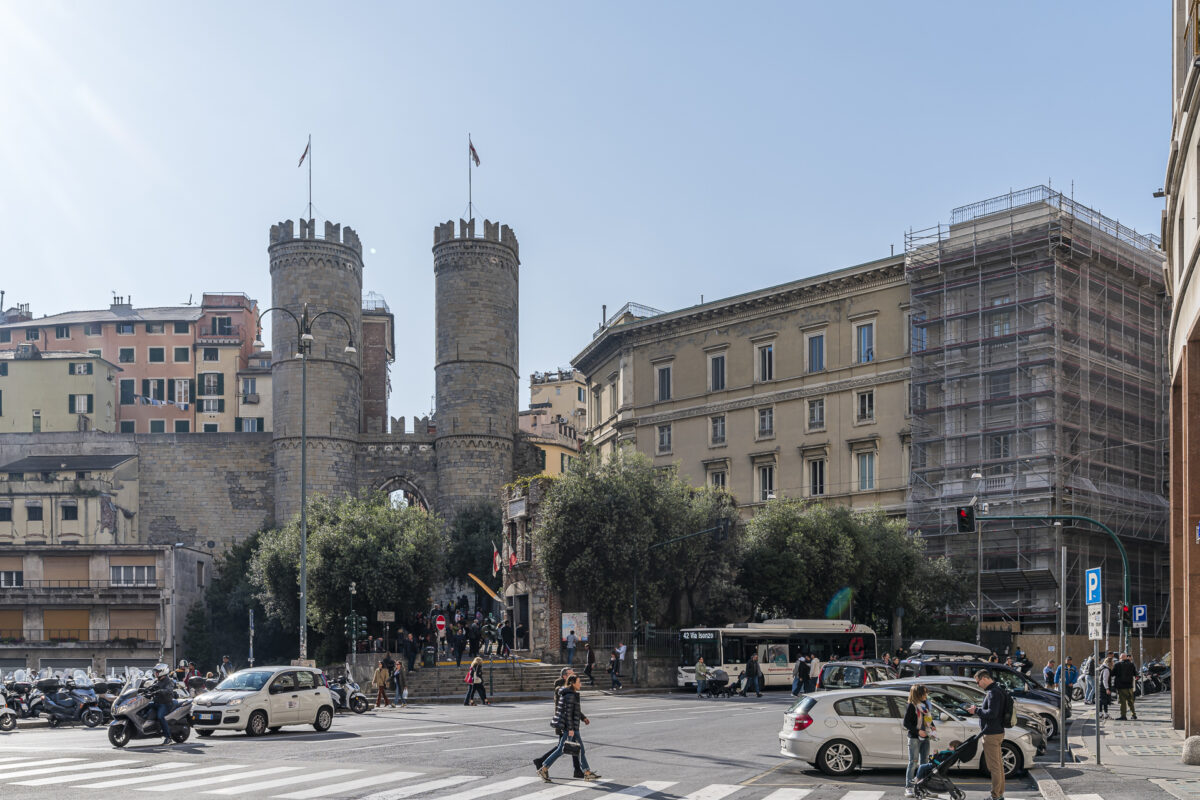
Tip: It is possible to climb the bell tower of the cathedral. You can find more information here: torrisanlorenzogenova.it
4. Discover the Strade Nuove and the Palazzi Rolli
Between the middle of the 16th century and the middle of the 17th century, an extraordinary number of magnificent aristocratic palaces were built in Genoa along the so-called “Strade Nuove” (new streets). The Strade Nuove corresponds to the current street ensemble of Via Garibaldi, Via Balbi and Via Cairoli. Since 2006, the Strade Nuove and 42 palaces along these streets have been part of the UNESCO World Heritage Site “Palazzi dei Rolli”. You can see the exact perimeter as well as the UNESCO World Heritage listed palaces in detail on this GIS map.
Many of the palaces are still privately owned today and can only be visited – if at all – as part of guided tours or on the so-called Rolli Days.
The Musei Nazionali di Genova in the Palazzo Reale and Palazzo Spinola as well as the Musei di Strada Nuova with the Palazzo Rosso, Palazzo Bianco and Palazzo Doria-Tursi provide an insight into the magnificent buildings. As a first priority, I would recommend a visit to these three palaces. But I also found the Palazzo Reale (first picture) very impressive.
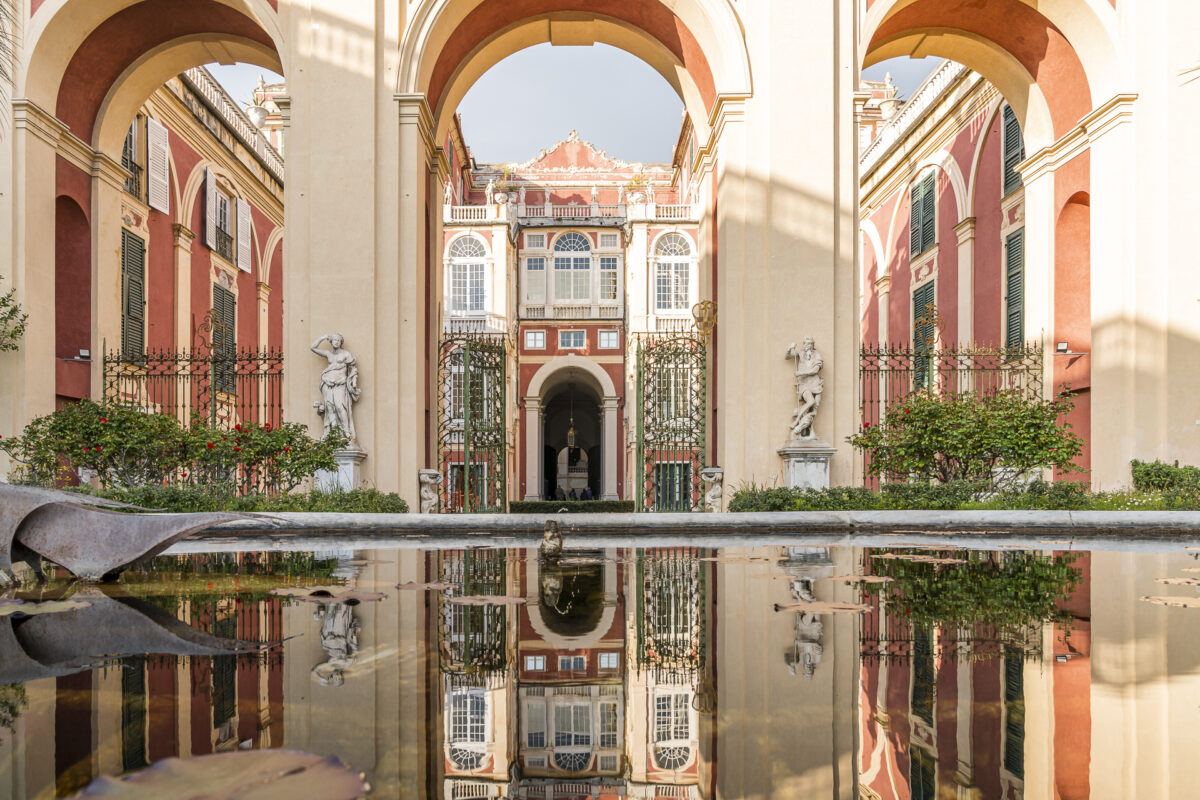
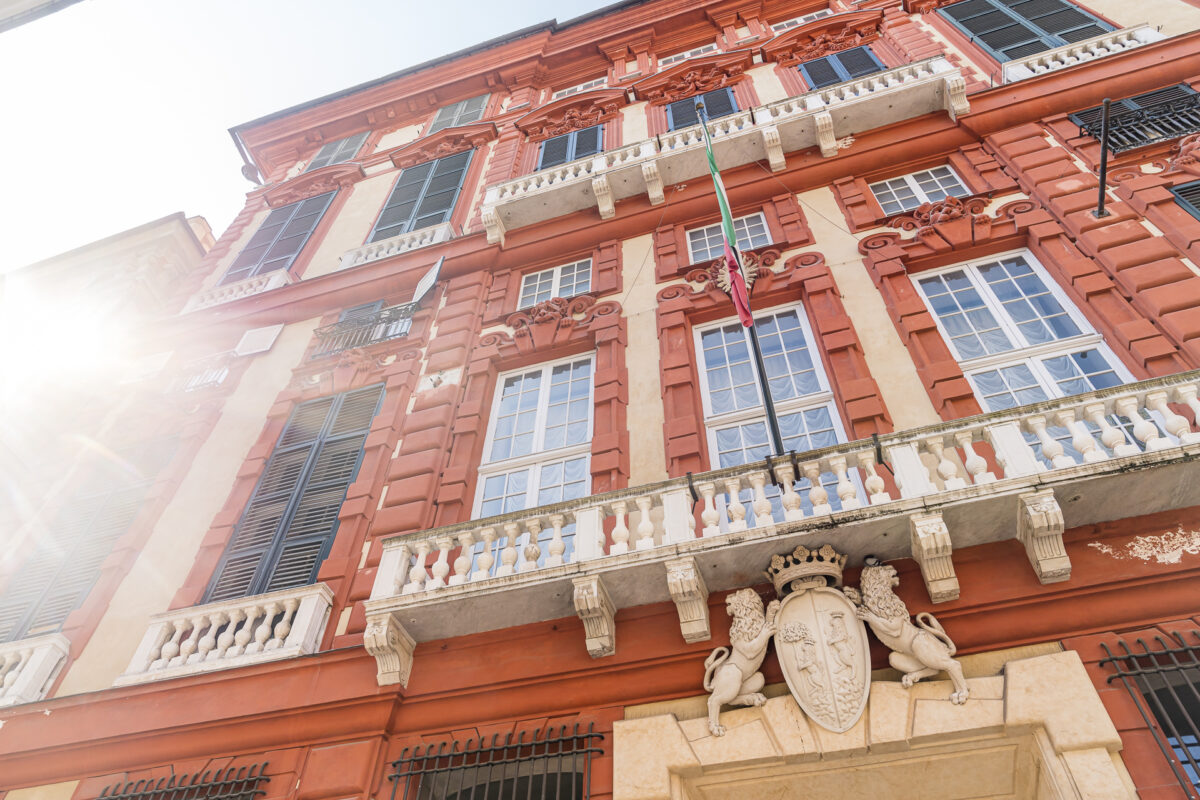
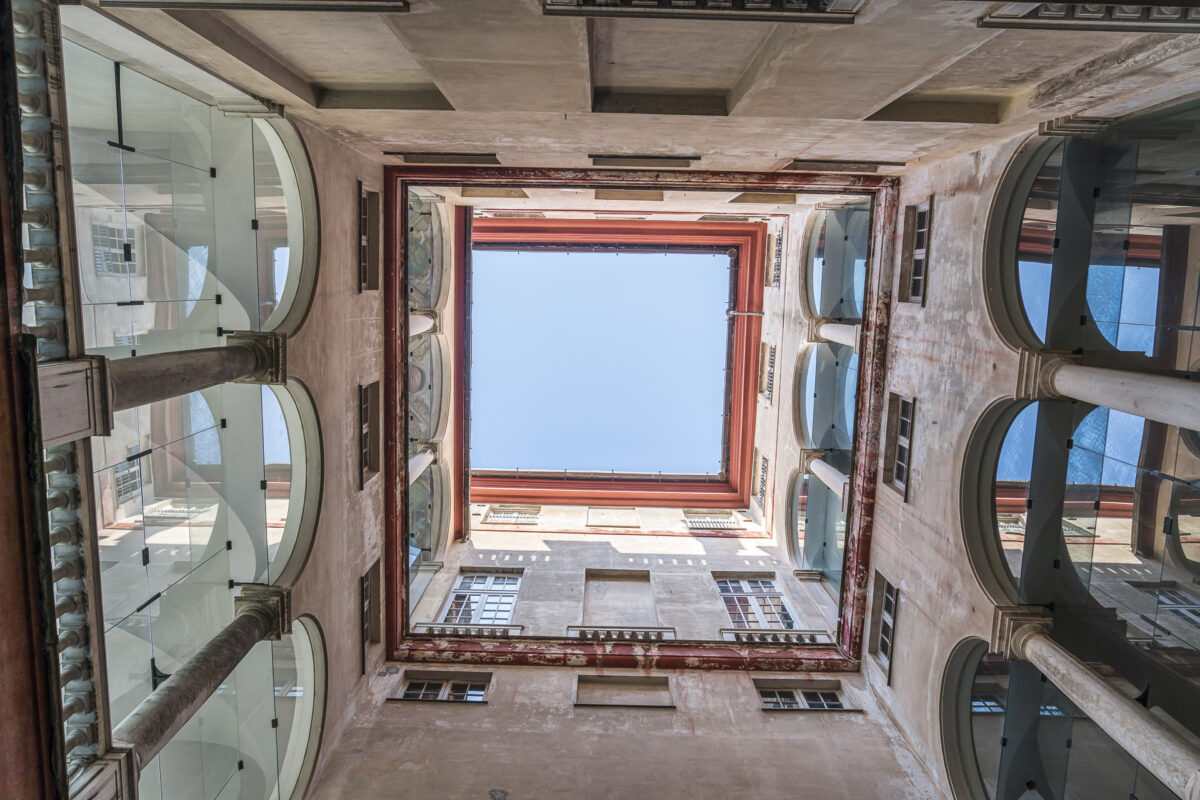
Good to know: The city’s museums are closed on Mondays. You can find more information about visiting the Palazzo Reale and the Musei di Strada Nuova on the linked pages. We did not buy the tickets in advance, but bought them directly on site.
5. Walk along Via XX Settembre to Boccadasse
Our next item on the agenda takes us back to Piazza de Ferrari, where the Teatro Carlo Felice opera house with the equestrian statue of Guiseppe Garibaldi is located. Here, the elegant, arcaded shopping street Via Settembre branches off to the southeast. In rainy weather it stays dry under the arcades and in the heat you can find welcome shade. The dead straight street leads past several sights – including the MOG Marcato Orientale (a modern market hall with many food stalls) and the victory arch “Arco della Vittoria”, built in memory of the victims of the First World War.
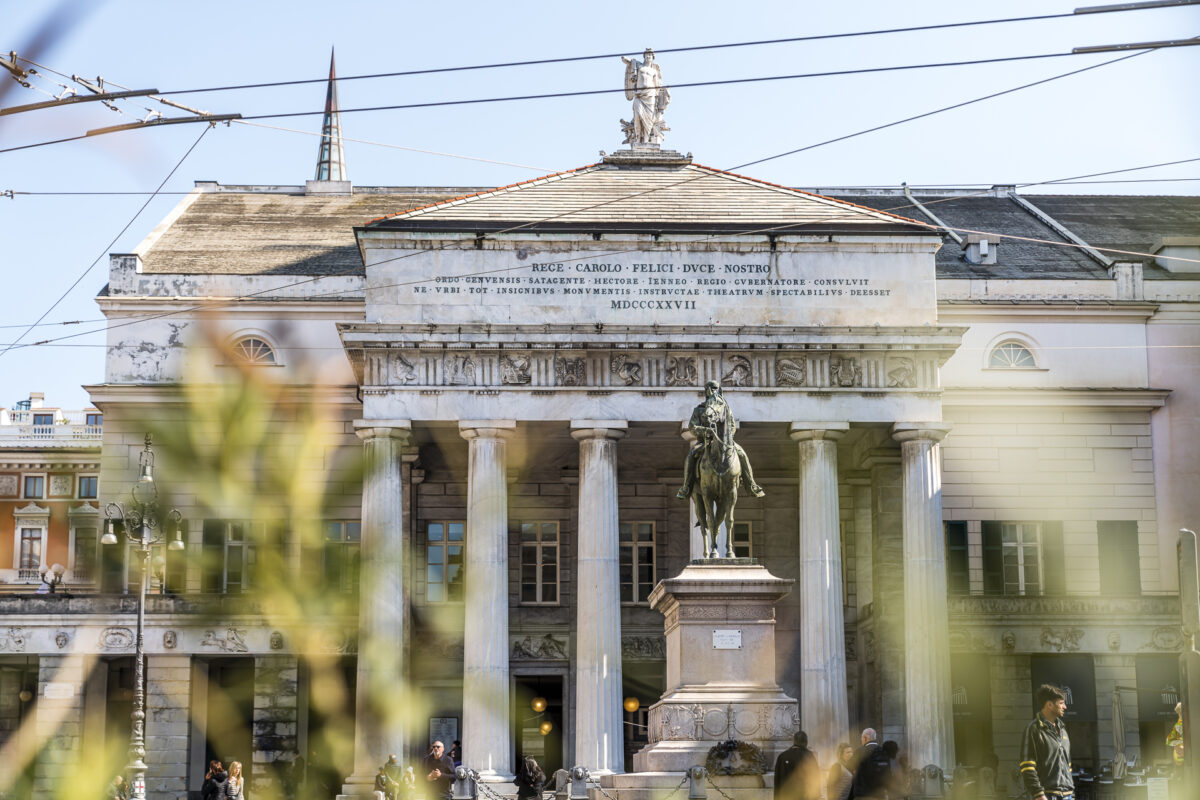
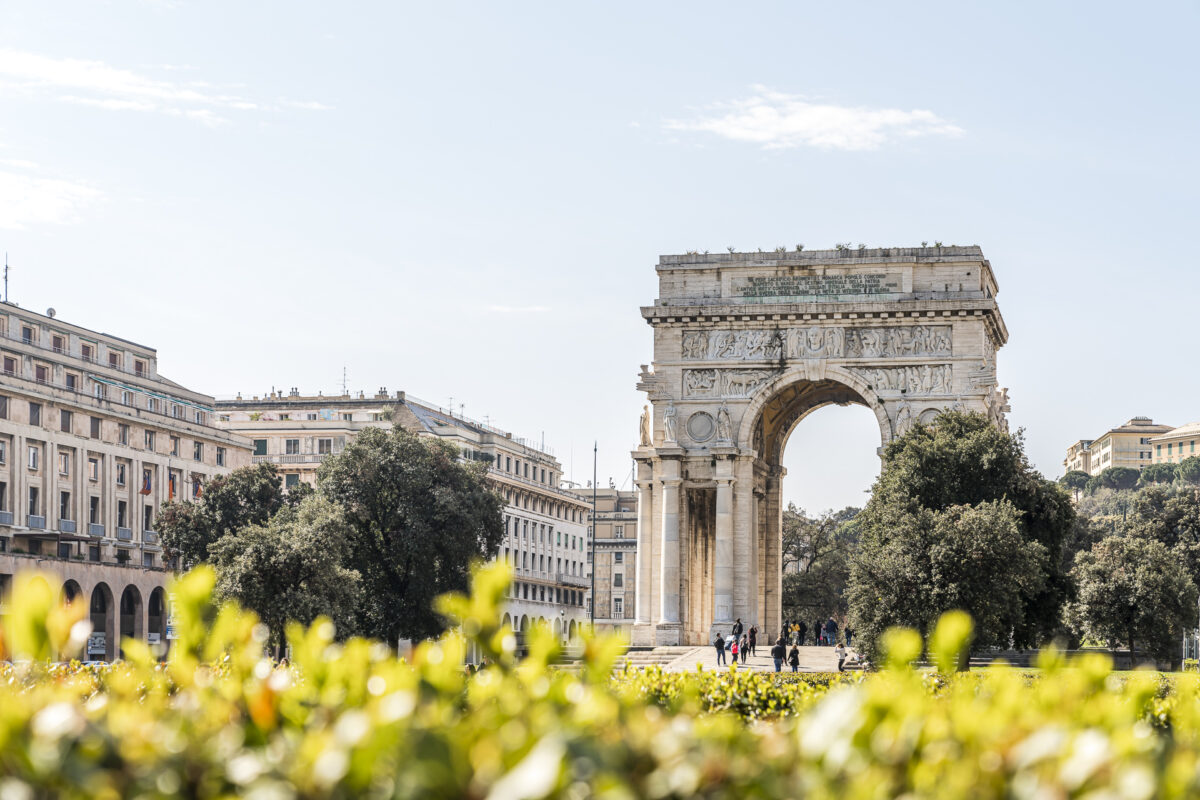
We follow the road straight ahead until we reach Via Nice. Afterwards we walk along Via Albaro and Via Pisa through secluded suburban districts towards Boccadasse. If you cover the entire route on foot, like us, you should plan about an hour of walking time. As a reward, a postcard view of the picturesque bay lined with pastel-colored houses awaits you in Boccadasse.
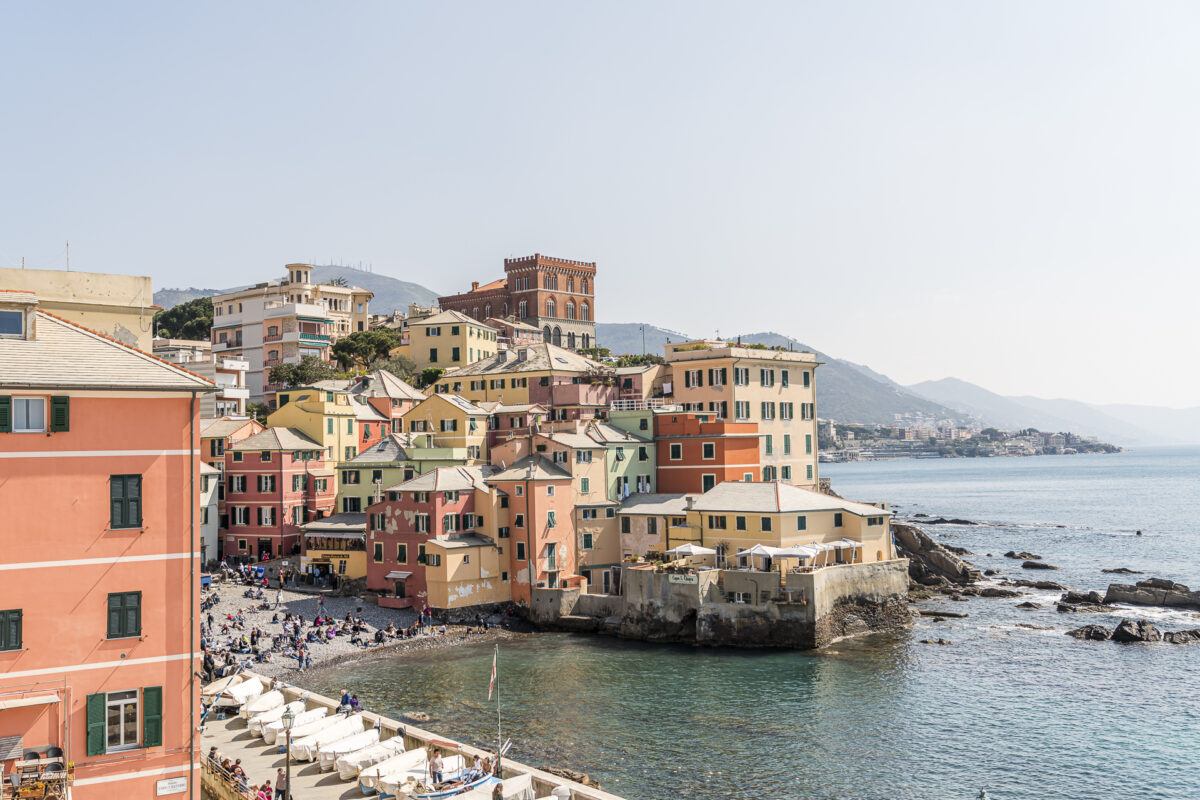
6. Take a lunch break at Corso Italia
The stone beach of Boccadasse (Spiaggia di Boccadasse) is a popular destination and accordingly the restaurants in the bay are well frequented. If you’re looking for a cosy spot on a sun terrace with sea views for a lunch break away from the hustle and bustle, you’ll find what you’re looking for at Ristorante Santamonica. Location, presentation of the dishes and the price-performance ratio of the wine list top! In our opinion, however, lunch dragged on a tad too long (we spent almost three hours on site for a 5-course meal). Otherwise, however, it is definitely a top address in an enviable location!
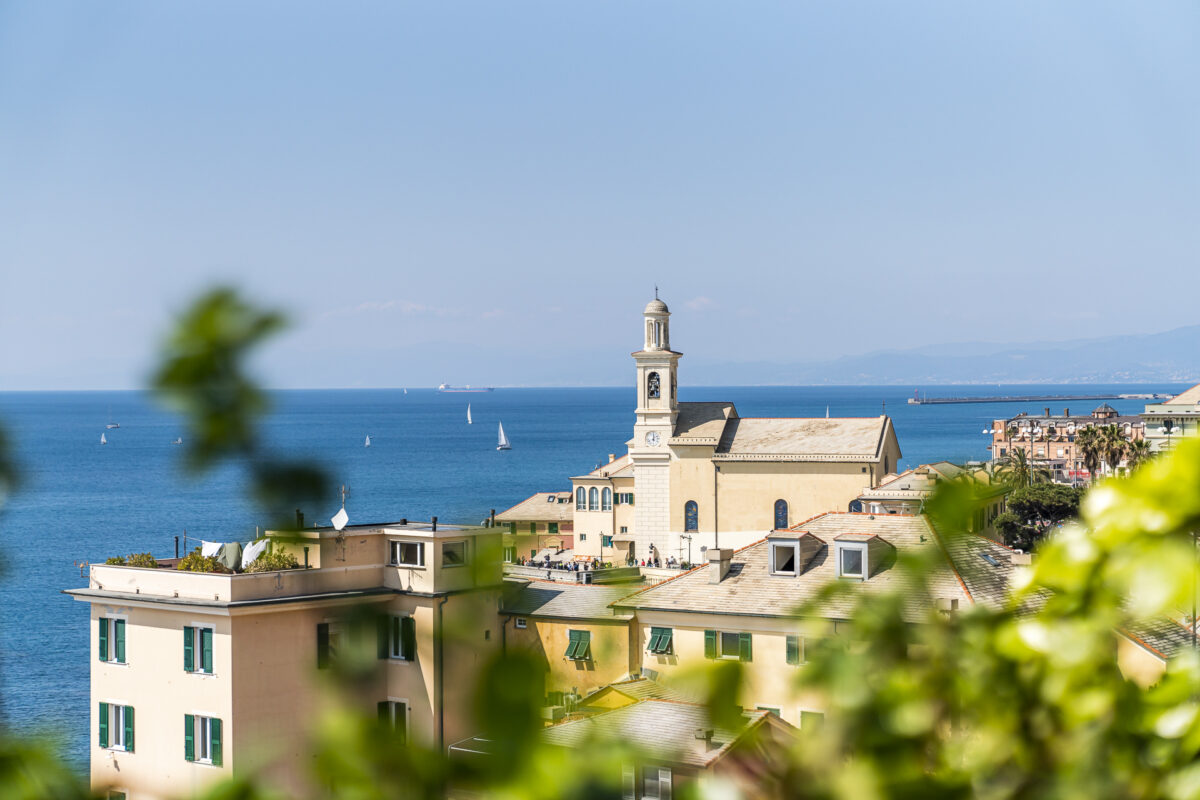
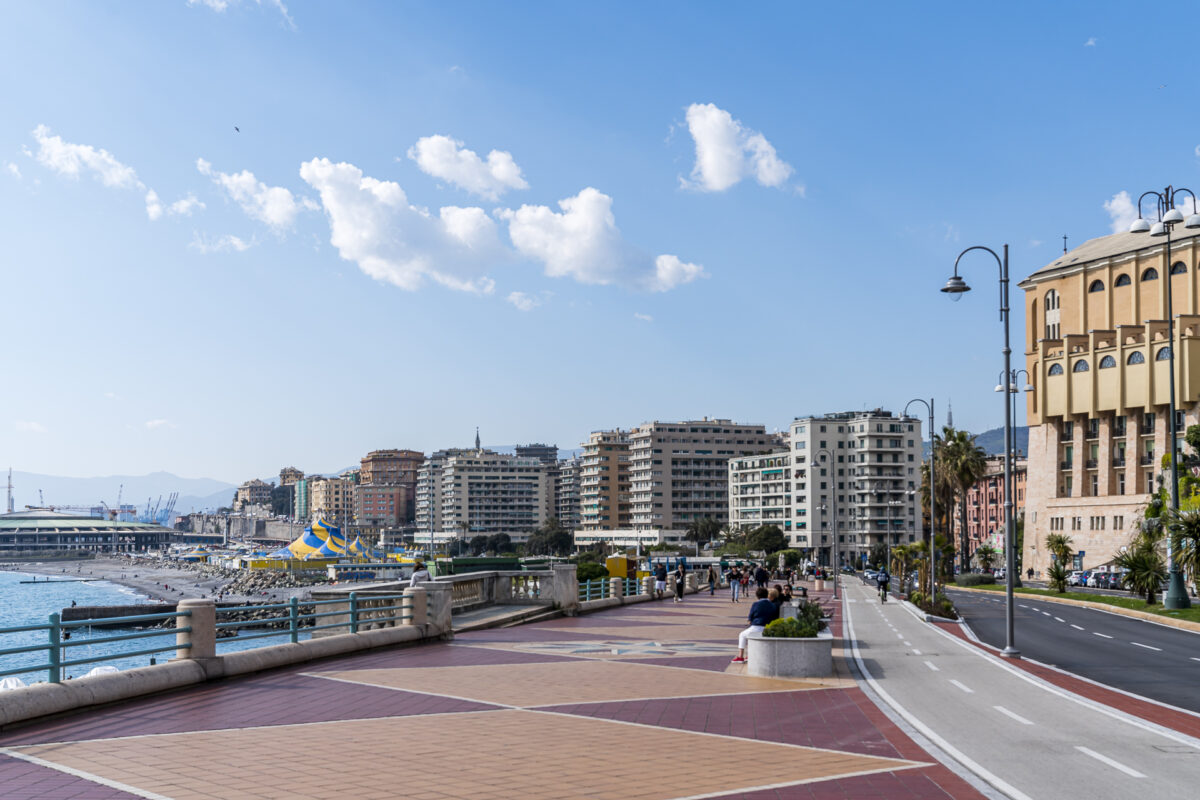
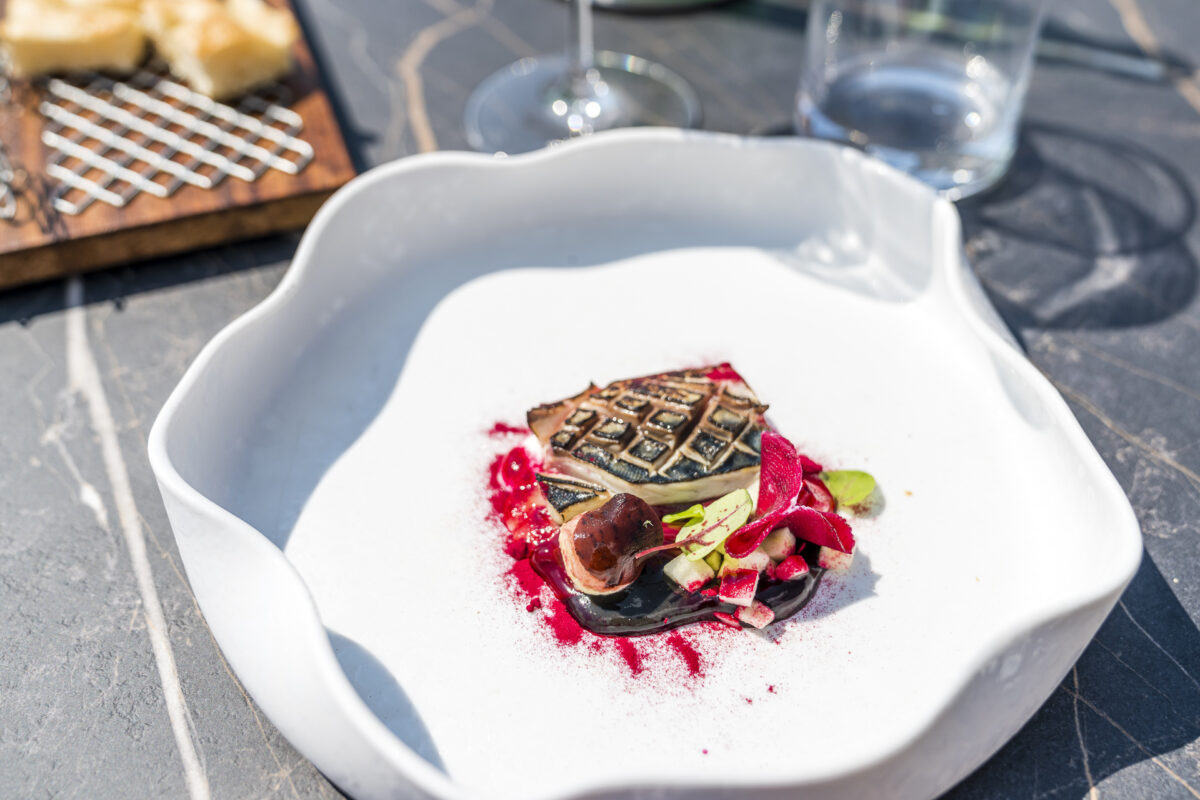
Ristorante Santamonica |Lungomare Lombardo, 27 | Tuesday to Sunday 7:30 p.m. to 10:30 p.m. | more information: santamonicagenova.it
Note: check the opening hours – now in the middle of summer it seems to be open only in the evening. I assume this varies seasonally.
7. Explore the pretty corners of the Carignano district
Due to the advanced time, we decided to tackle the way back to the old town after lunch. Alternatively, you could follow the coastal road from Boccadasse further east to Nervi. The 2-kilometre-long beach promenade Anita Garibaldi is said to be particularly beautiful!
In my opinion, you can also follow the Corso Italia back to the historic center of Genoa. Here, too, a wide waterfront promenade runs parallel to the road as well as an attractive remote cycle path. At the time of our visit, extensive construction work was underway in the area of the fair (Fiera di Genova). By the end of 2024, a completely new district – the Waterfront di Levante – is to be built here. For this reason, we decided to take a bow over the hill of “Carignano”. Worth seeing here is the Basilica di Santa Maria Assunta enthroned on the hill with its impressive dome.
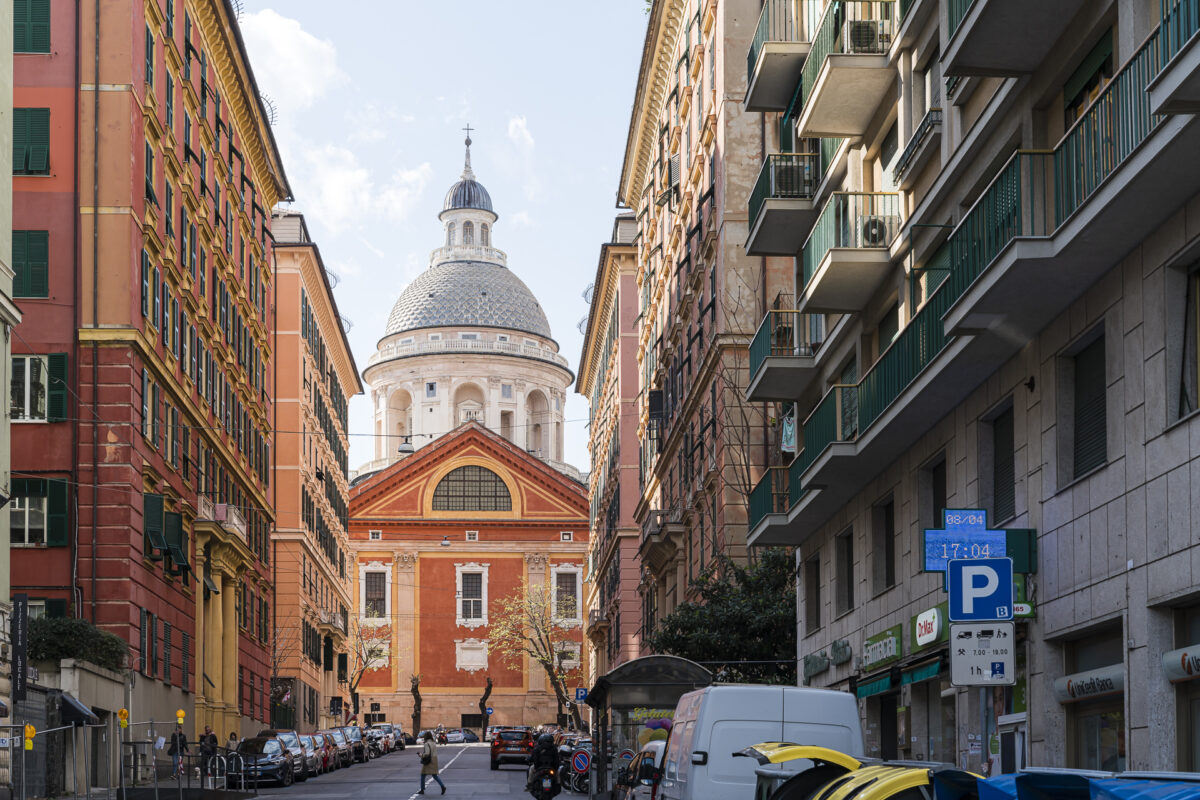
And if you are interested in contemporary art, you should take a look at Villa Croce. It houses the Museum of Contemporary Art, which hosts changing exhibitions. The exhibition space is relatively small – the visit to Villa Croce will not take you much more than 45 minutes.
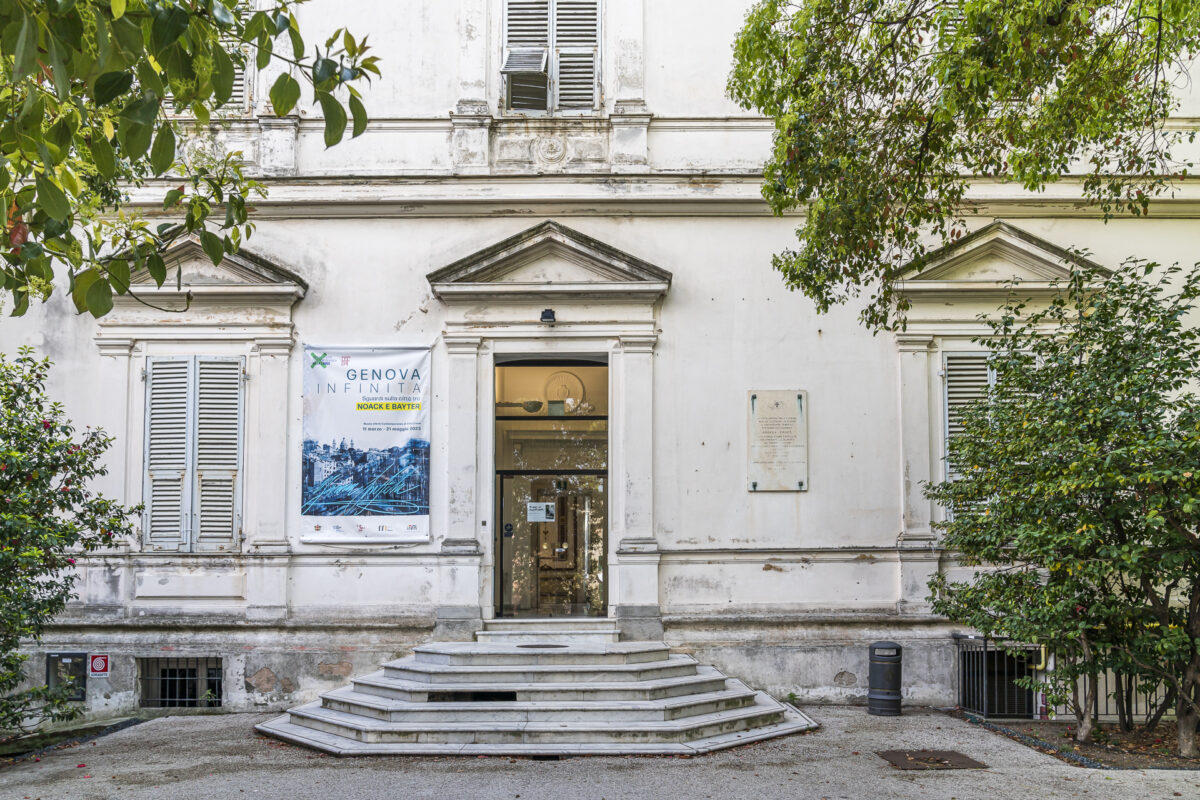
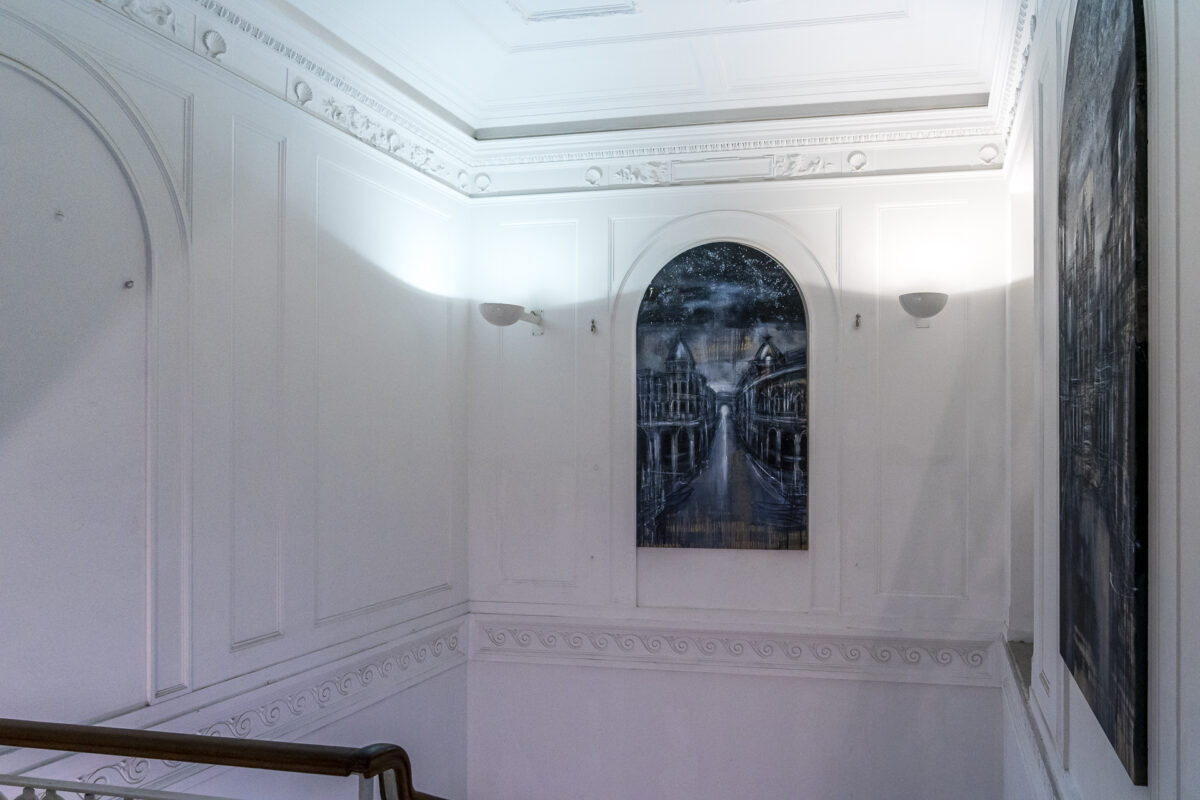
Villa Croce Museum of Contemporary Art | Closed on Mondays | Single admission 5 Euro | more information: museidigenova.it
8. End the day at Porto Antico
At sunset, we are drawn to the old port of Genoa. An atmospheric end to the day. And if you’re still a little hungry at a late hour, like us, you can get yourself a delicious pizza to go in the small “backyard pizzeria” il Ristoro dei Grimaldi! In the display, we also noticed the deliciously fragrant focaccia.
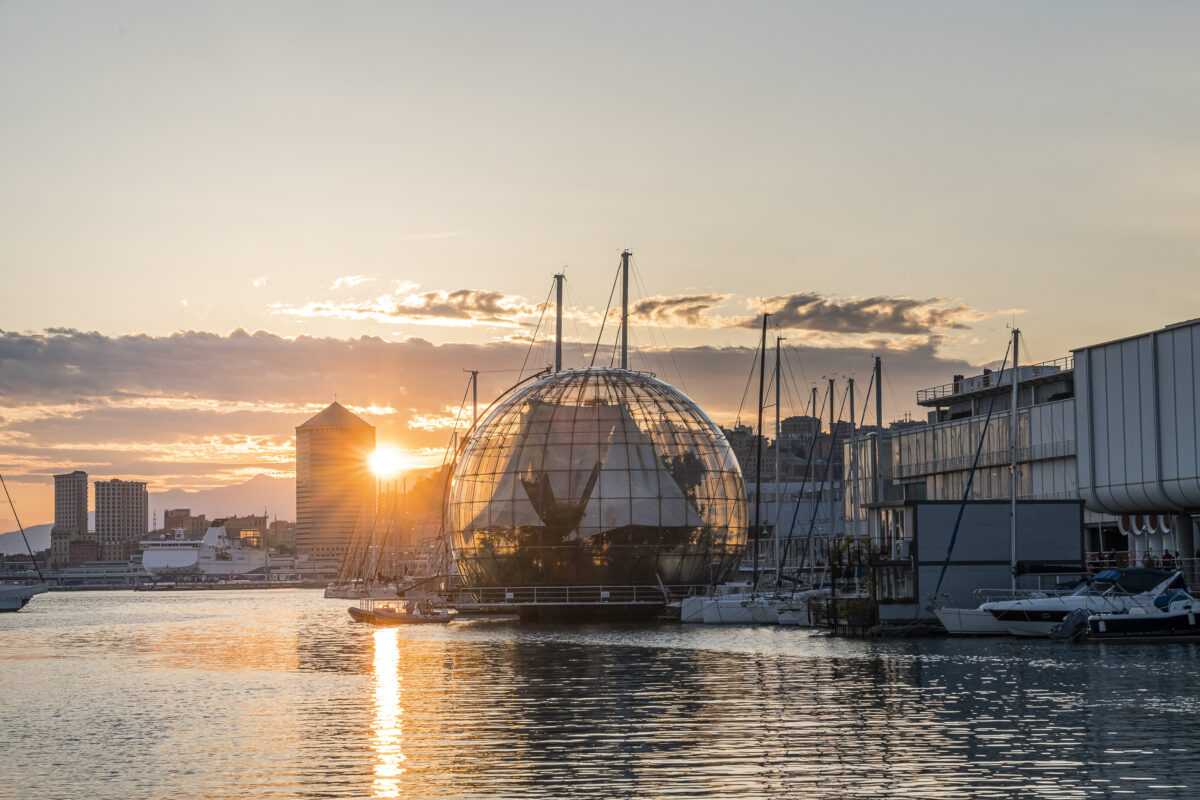
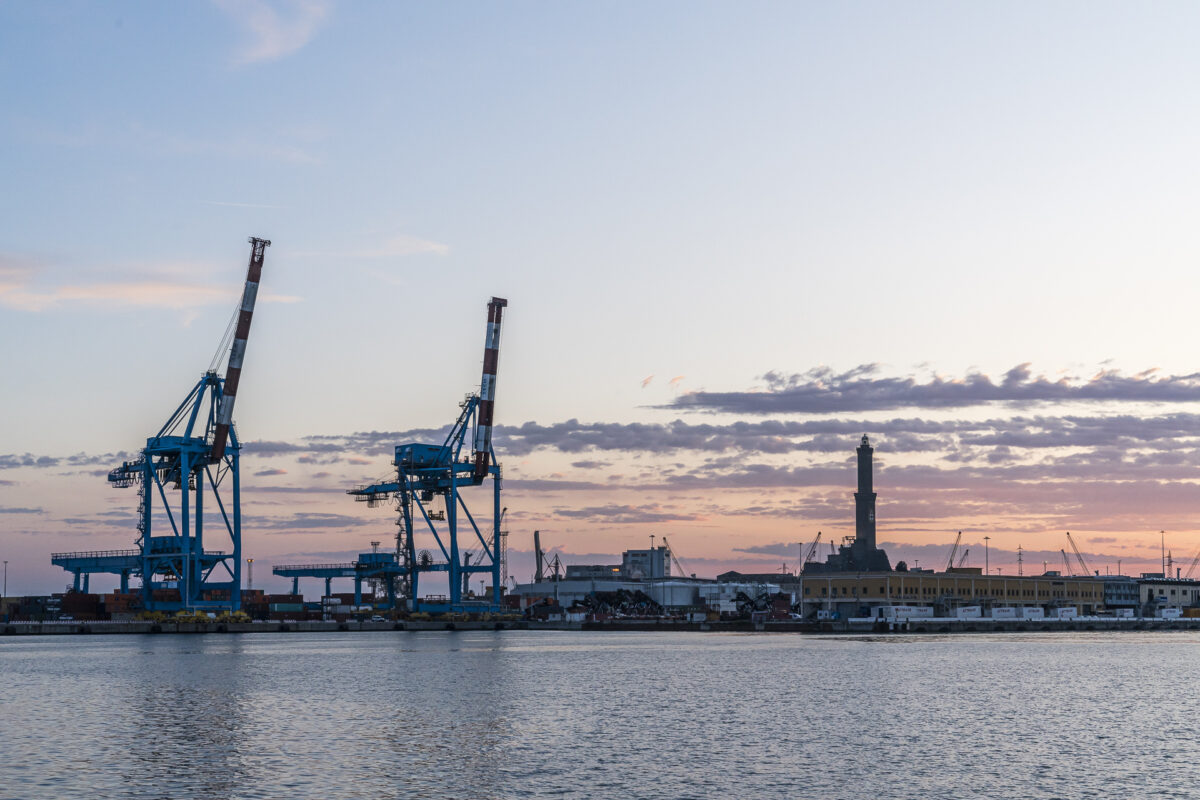
Genoa Day 3
Our second full day in Genoa was all about the viewpoints – and there are quite a few of them in hilly Genoa. In addition, we immersed ourselves in the history of the once powerful seafaring nation.
9. Take a detour to the “Righi”
Genoa’s public transport system includes not only buses and metro lines, but also two funiculars and ten lifts, which provide quick connections to the higher parts of the city and their viewpoints. One of these vantage points with an unmistakable Swiss connection is the “Righi”. The naming as well as the construction of the Zecca-Righi funicular goes back to the Obwalden railway pioneer Franz Josef Bucher. The funicular railway began operation at the end of the 19th century and since then has been providing access to the city centre of Genoa with the extensive local recreation and hiking area of the “Parco delle Mura” nature park in just under 20 bumpy rides.
From the viewing platform at the top station of the funicular, there is a panoramic view of the city centre of Genoa and the harbour facilities. From here you can also start hikes along the “Mura delle Chiappe“. If you are interested in old military fortresses, you should allow enough time for this program item. The city walls, built in the 17th century to protect the city and the port, are still well preserved and are considered the second longest city walls in the world after the Great Wall of China!
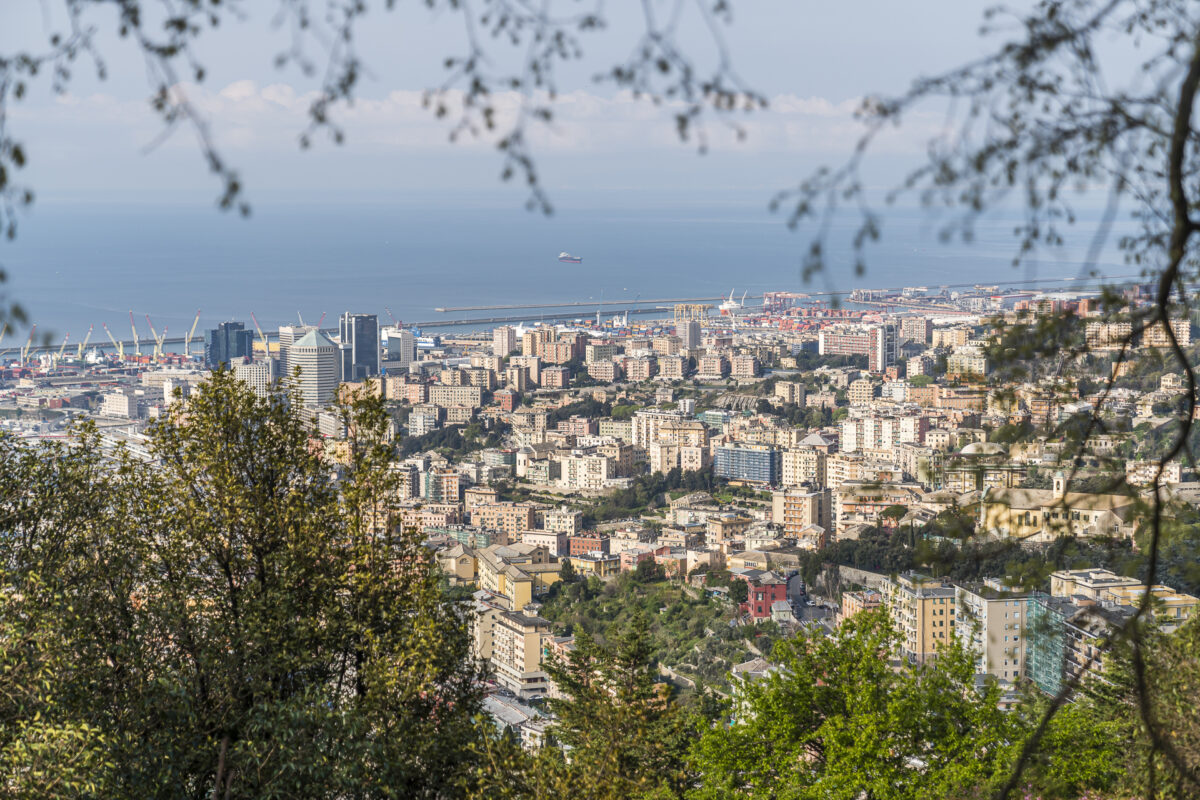
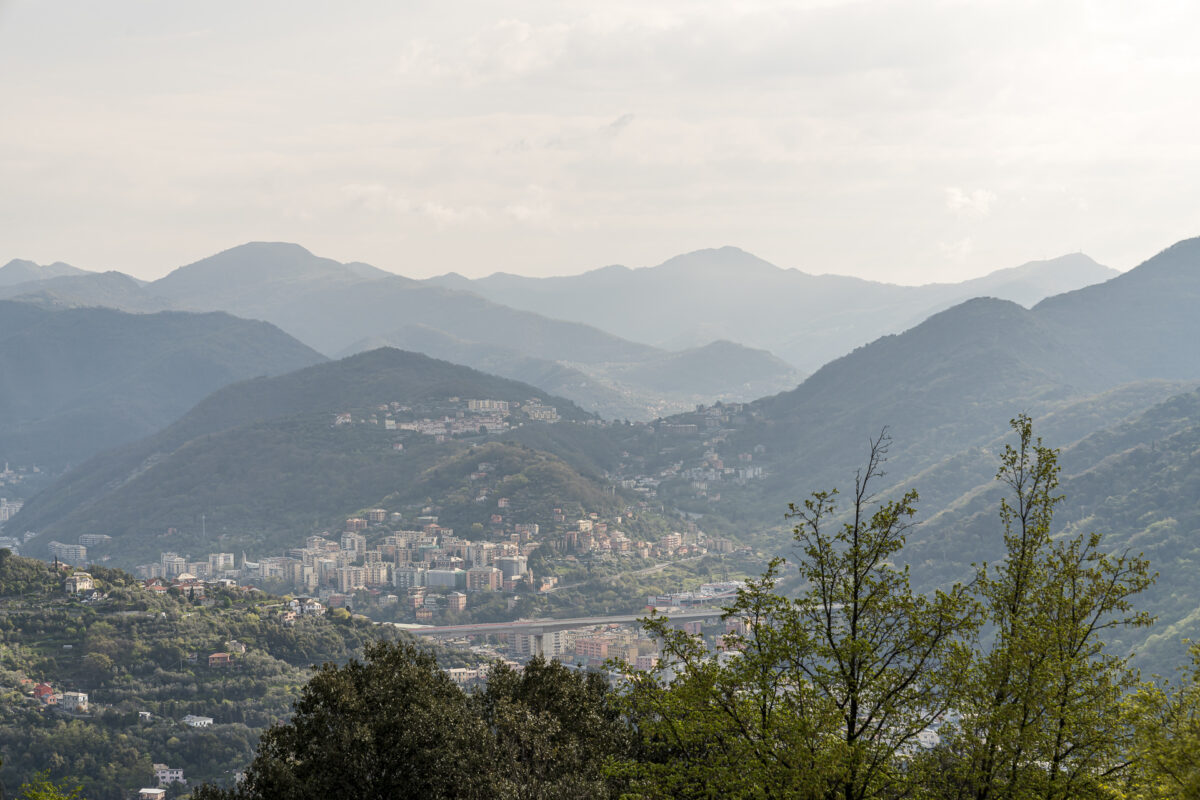
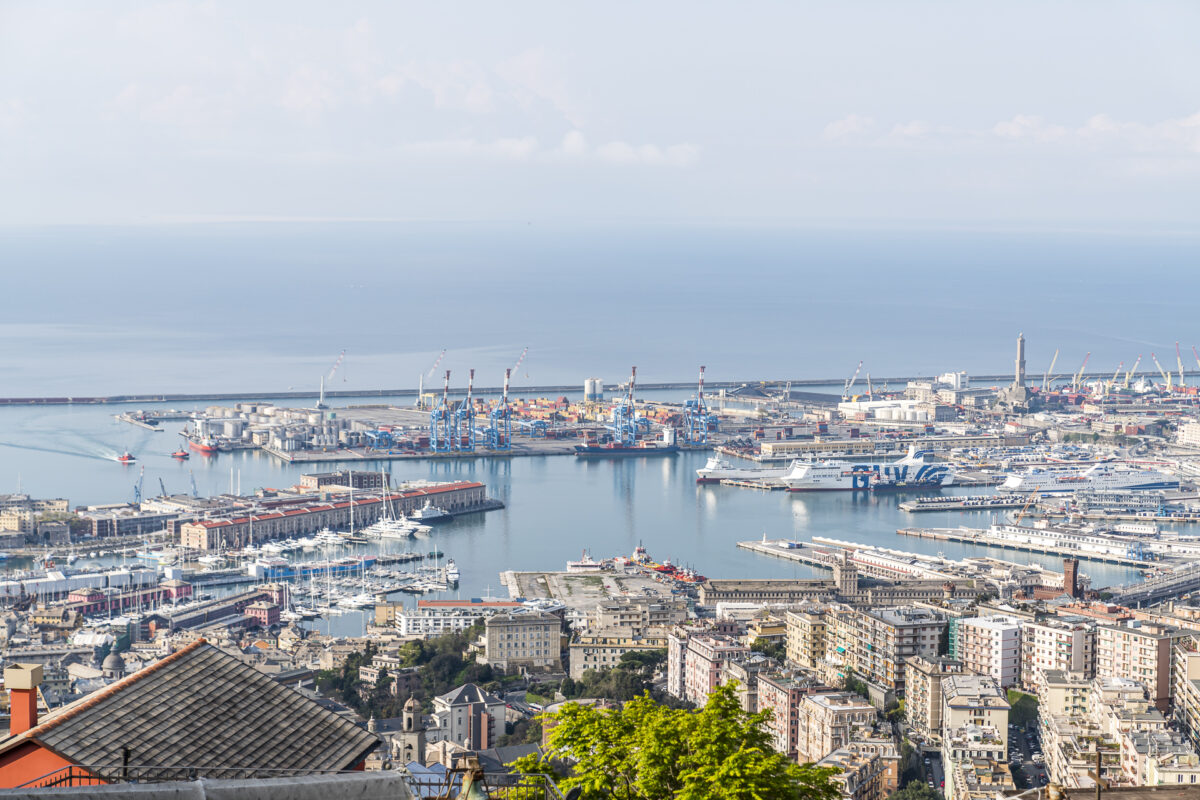
Tip: Public transport in Genoa is operated by AMT. For about two years now, various routes have been offered free of charge at selected times as part of test operations. Currently, all funiculars and lifts can be used free of charge (without a ticket). You can find the latest information on this on the AMT website.
10. Visit the Galata Maritime Museum
The detour to the Galata Museo del Mare is not only worthwhile in rainy weather. We were pleasantly surprised by the informative and interactive exhibition rooms. Among the highlights are the full-size Genoese galley and the submarine “Nazario Sauro”, which is moored in the harbour in front of the museum and can also be visited. If you want to see everything on the 12,000 m2 If you want to look at the exhibition space in detail and read through it, you can easily spend three to four hours here.
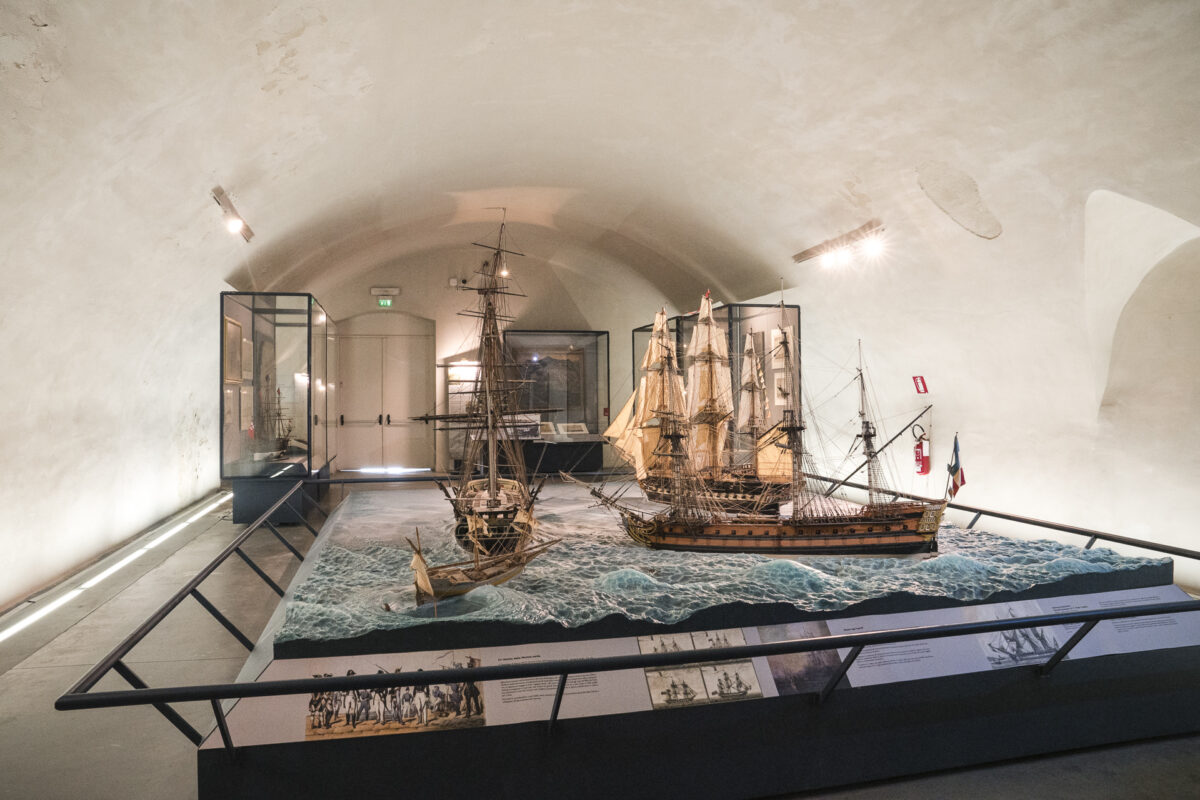
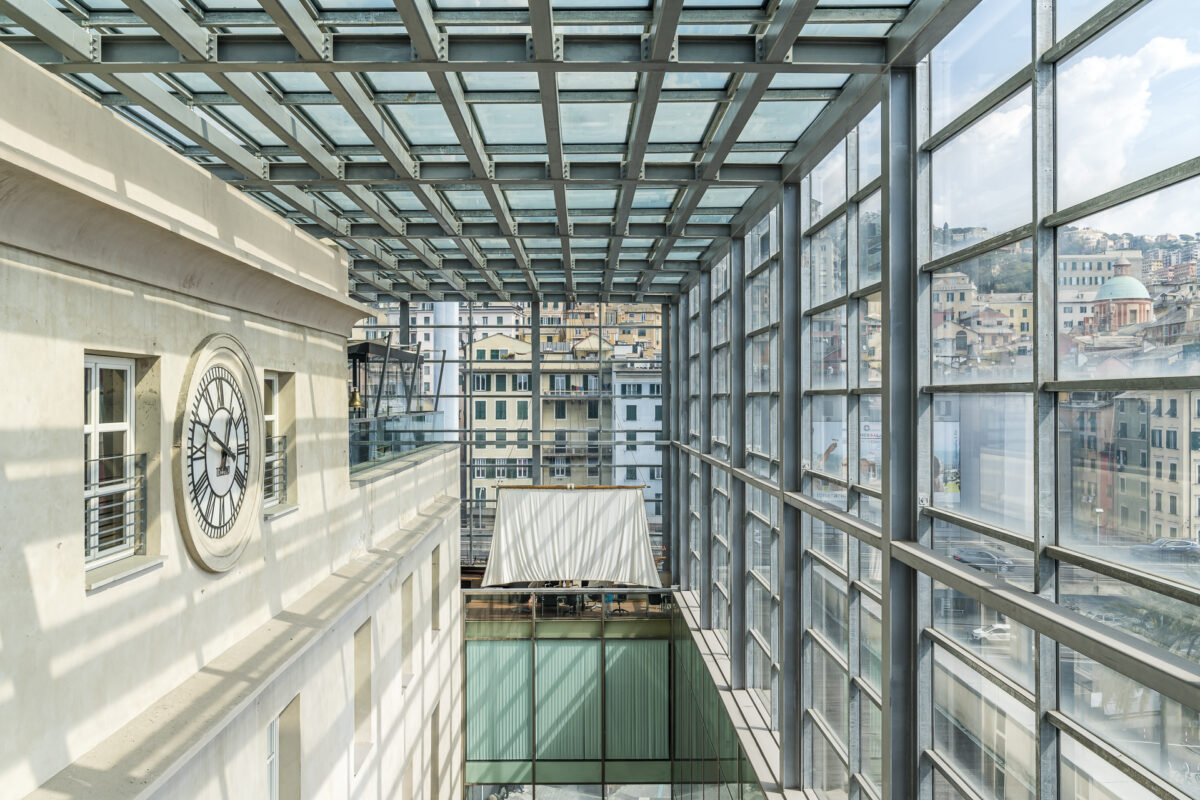
At the top of the museum is the viewing terrace. From here you have one of the best panoramic views of the old town opposite.
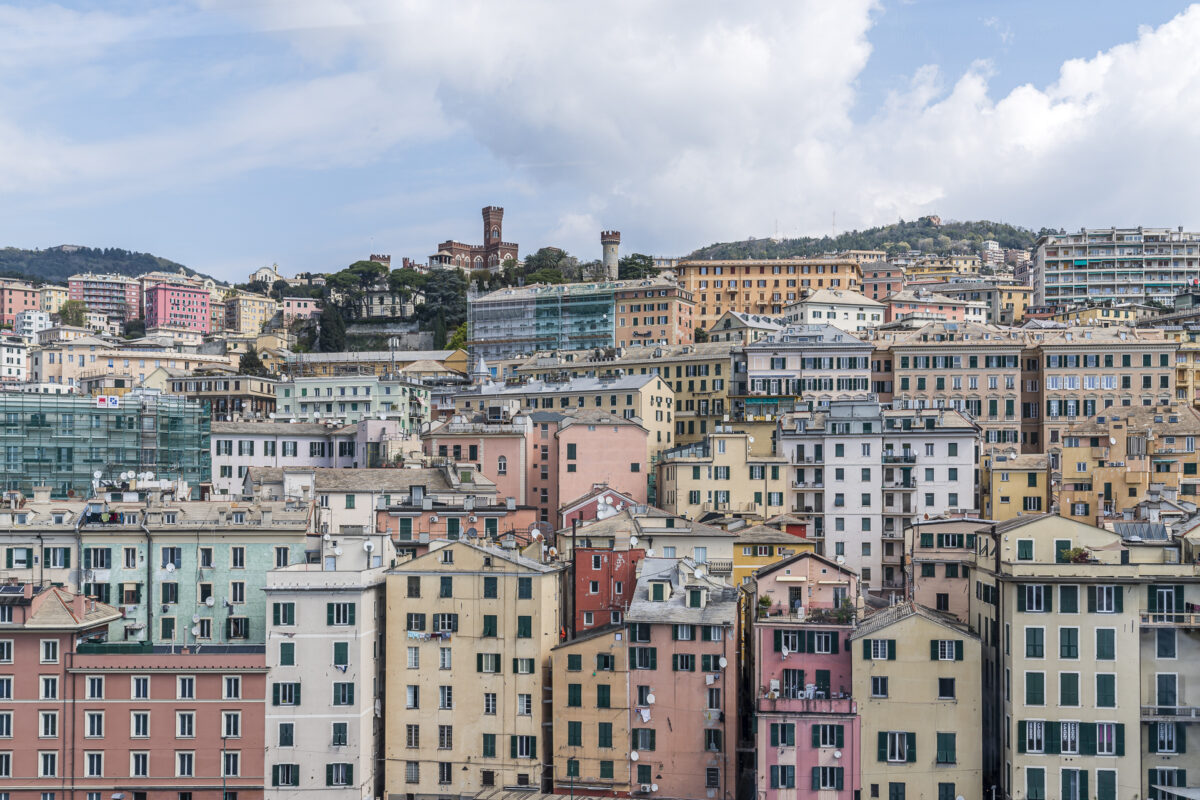
Galata Museo del Mare | Closed on Mondays | Regular entrance fee museum + submarine: 17 Euro | more information at galatamuseodelmare.it
Good to know: the second tourist attraction in the Porto Antico area is the Genoa Aquarium. The second largest aquarium in Europe is considered one of THE top sights in the city and is especially popular with families with children.
11. Stop at a traditional osteria for lunch
It is not far on foot from the museums of Porto Antico to the heart of the old town of Genoa. We take this opportunity to stop for lunch in an osteria. At short notice, I get a table in the Osteria Le Colonne, which serves directly in front of the cathedral on Piazza San Lorenzo when the weather is nice. An atmospheric location. In addition, there are various typical Ligurian dishes on the menu. For example, I ordered a plate of delicious mandilli de sea al pesto.
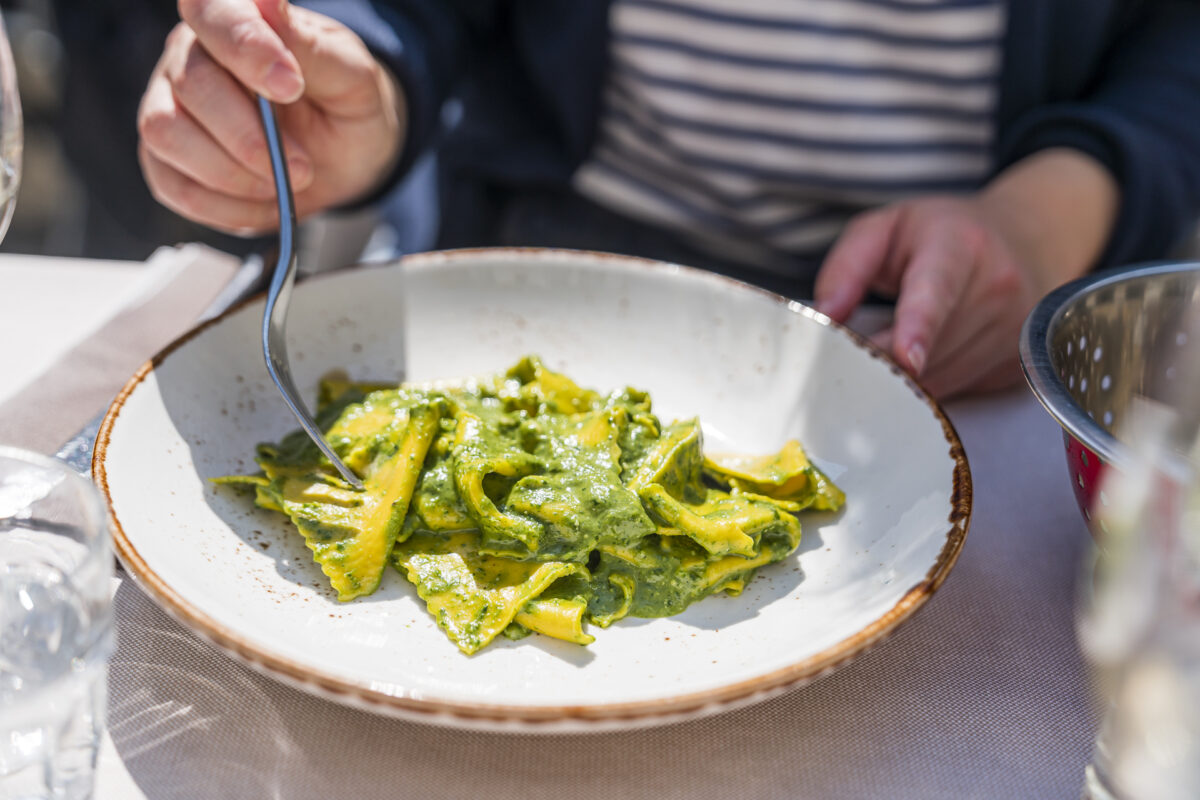
Osteria Le Colonne Piazza Invrea, 3 R | open daily for lunch and dinner | Reservation by phone recommended | more information osterialecolonne.it
For dessert, I treated myself to an ice cream from the gelateria “U gelato du Caruggi“. Is it the best ice cream in Genoa? I don’t know – it definitely tasted very good!
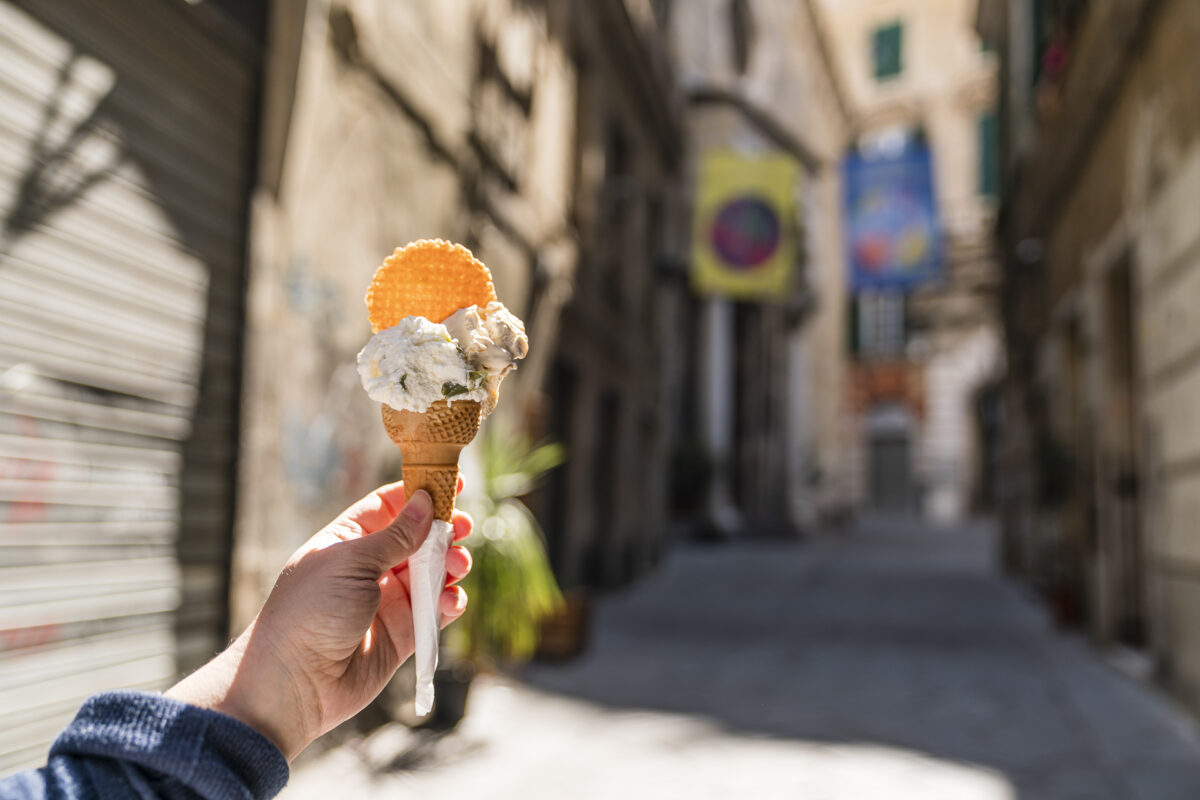
12. Admire the sunset from the Belvedere Castelletto
One place that you should definitely visit when visiting Genoa is the “Belvedere Castelleto” viewpoint above Via Garibaldi. Particularly worthwhile: at sunset.
You can walk up from the Piazza del Portobello or take the neat Art Nouveau elevator “Ascensore Castelletto Levante”. The striking lift tower can be seen in the first of the following pictures. Alternatively, a tunnel system leads from Via Cairoli to the “Ascensore Castelletto Ponente” elevator – which also takes you directly up to the viewing platform.
As already written, you currently do not need an ATM ticket to travel with the elevators. They are free.
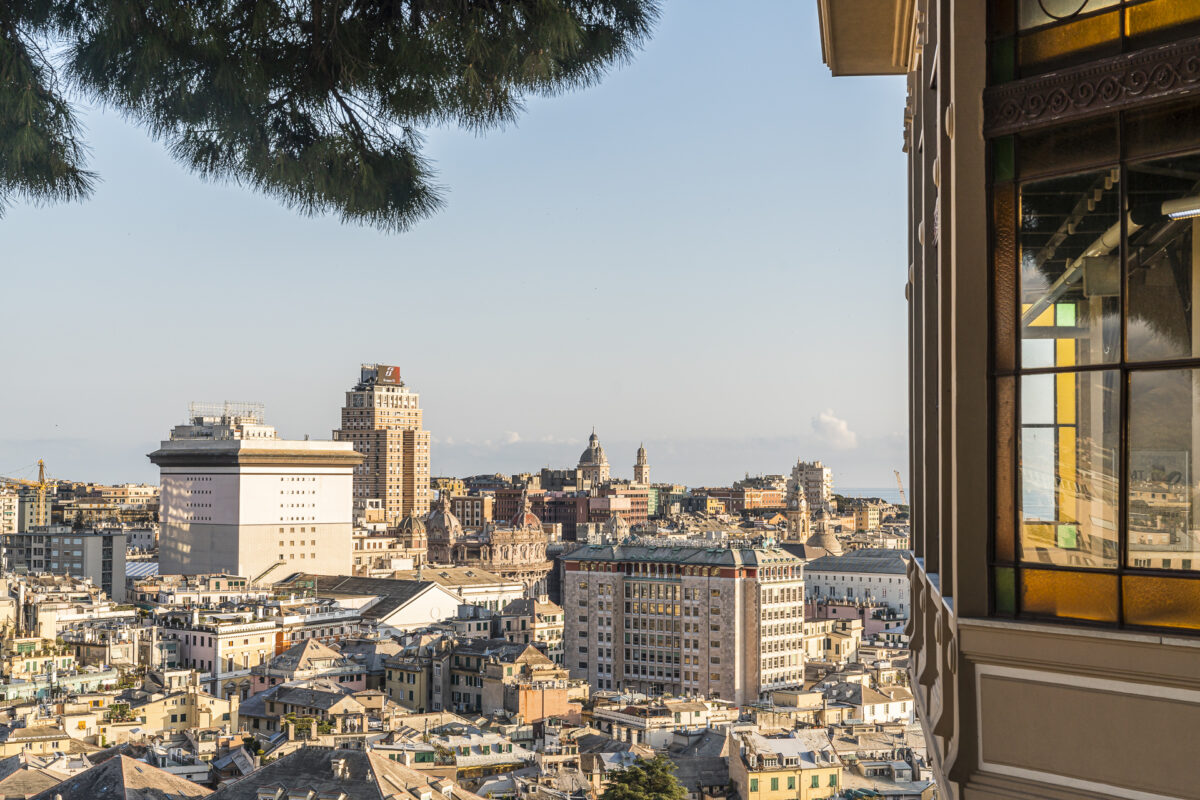
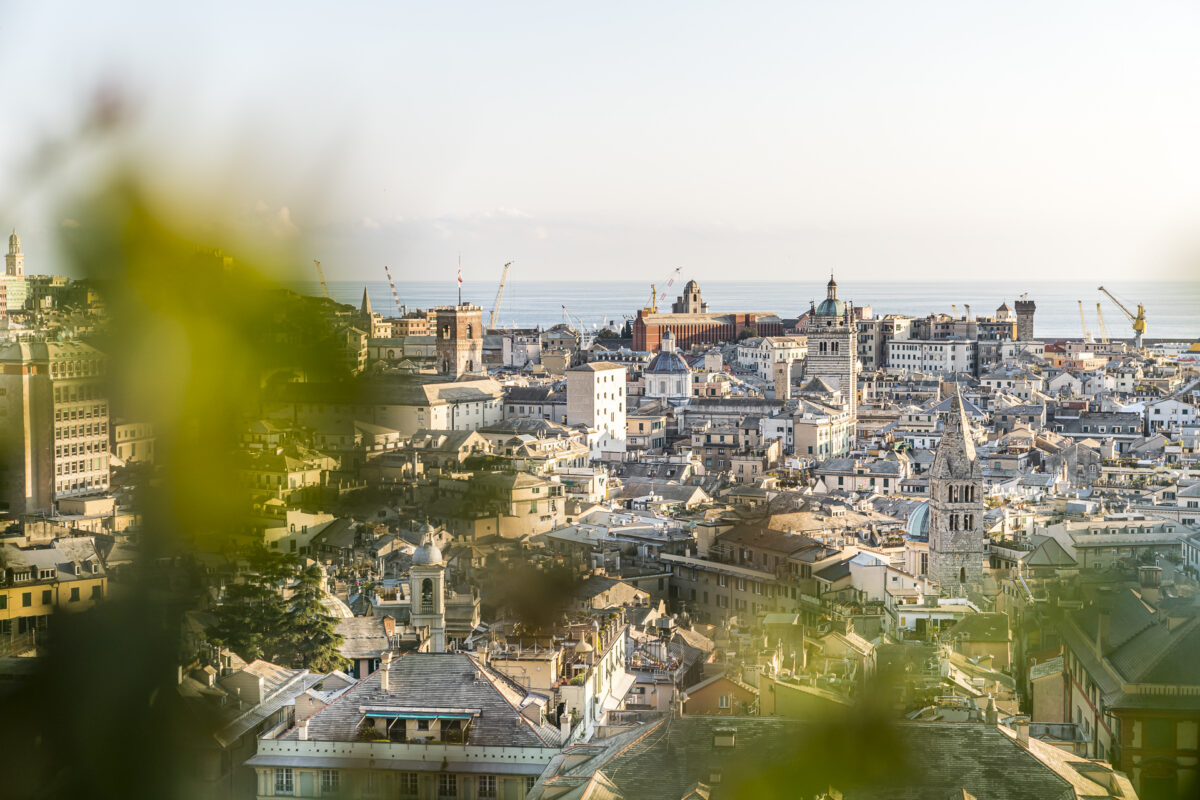
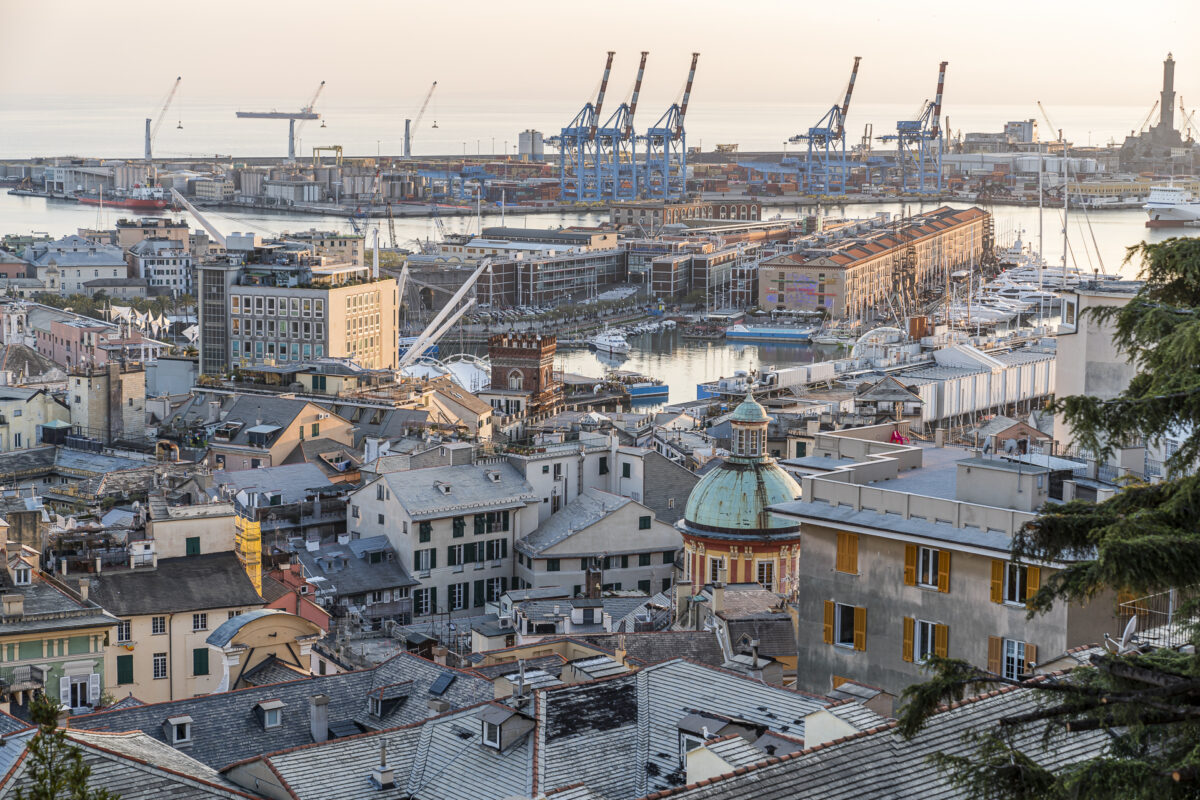
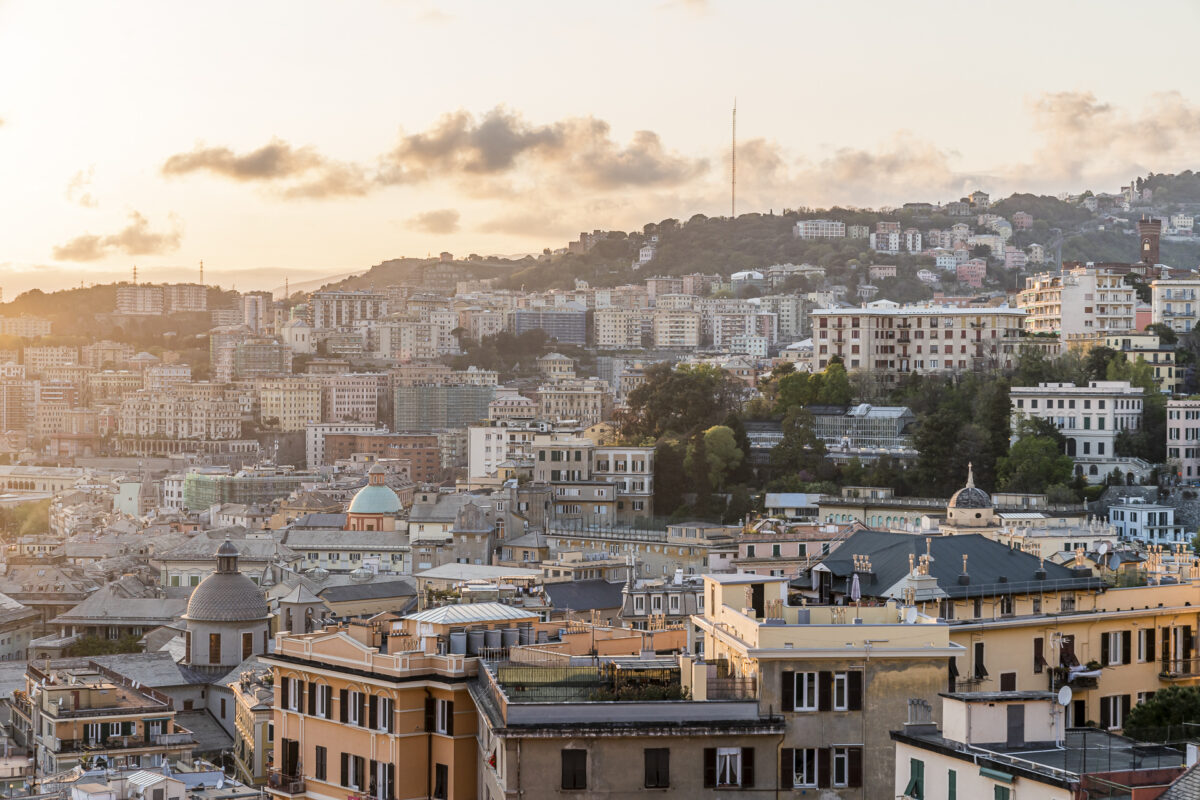
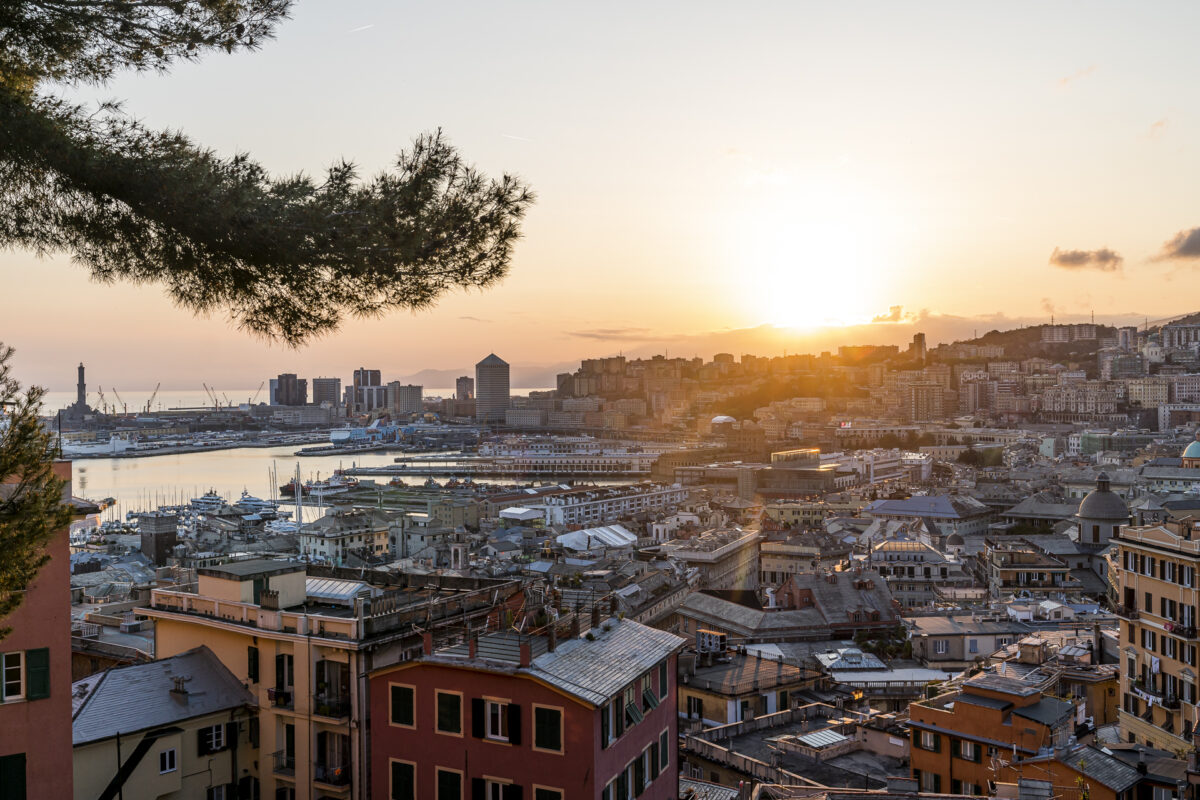
Note: On Google Maps, in addition to the name Belvedere Castelletto, the term Belvedere Luigi Montaldo is also used – this means one and the same place.
13. Dine at the Hostaria Ducale
After an atmospheric sunset, we walk back on foot following the steps into the narrow streets of the old town. For the last evening we have reserved a table at the Hostaria Ducale. The restaurant is located a stone’s throw from Piazza Ferrari, in the heart of Genoa. The Hostaria Ducale is listed in the Michelin Guide, but does not (yet) have a star. However, on the list of the top 50 restaurants in Italy (Migliori Ristoranti Italiani), it made it to 22nd place in 2023 – a decent achievement.
And after feasting our way through the tasting menu that evening, we can say: absolutely deserved! Not only the food, but also the service and ambience are at star level.
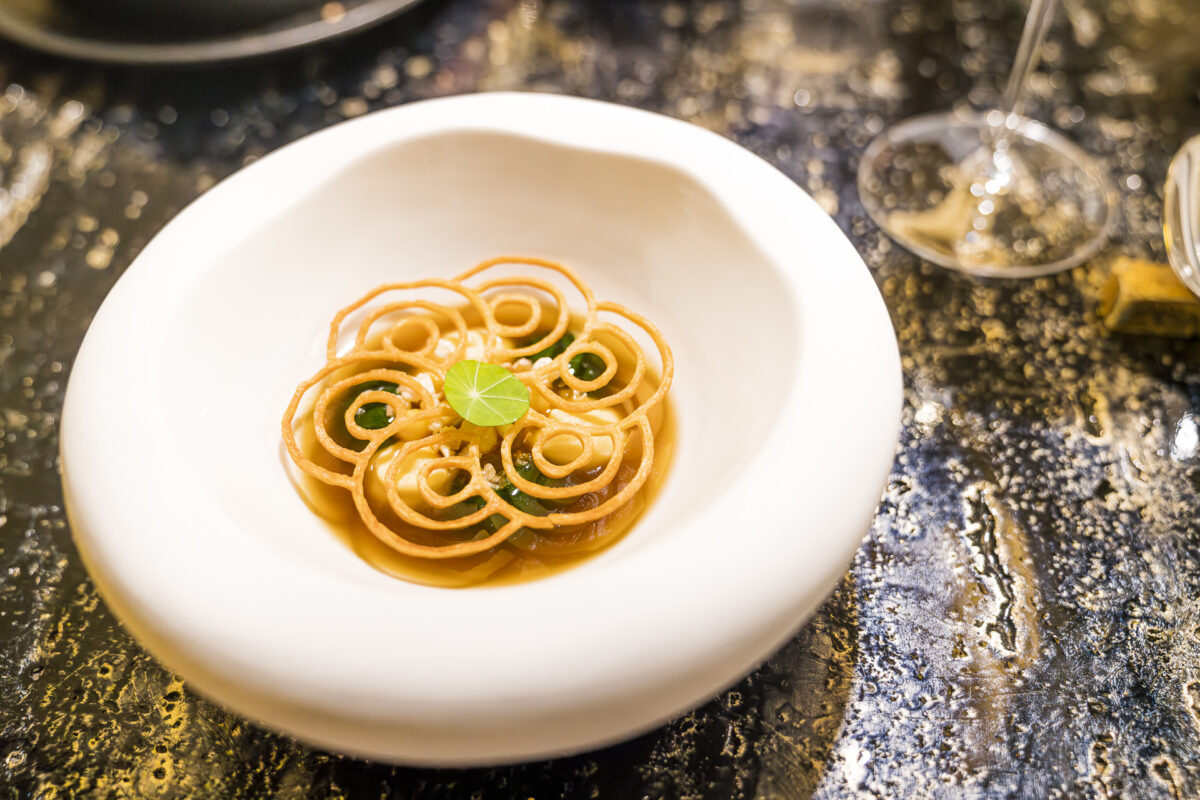
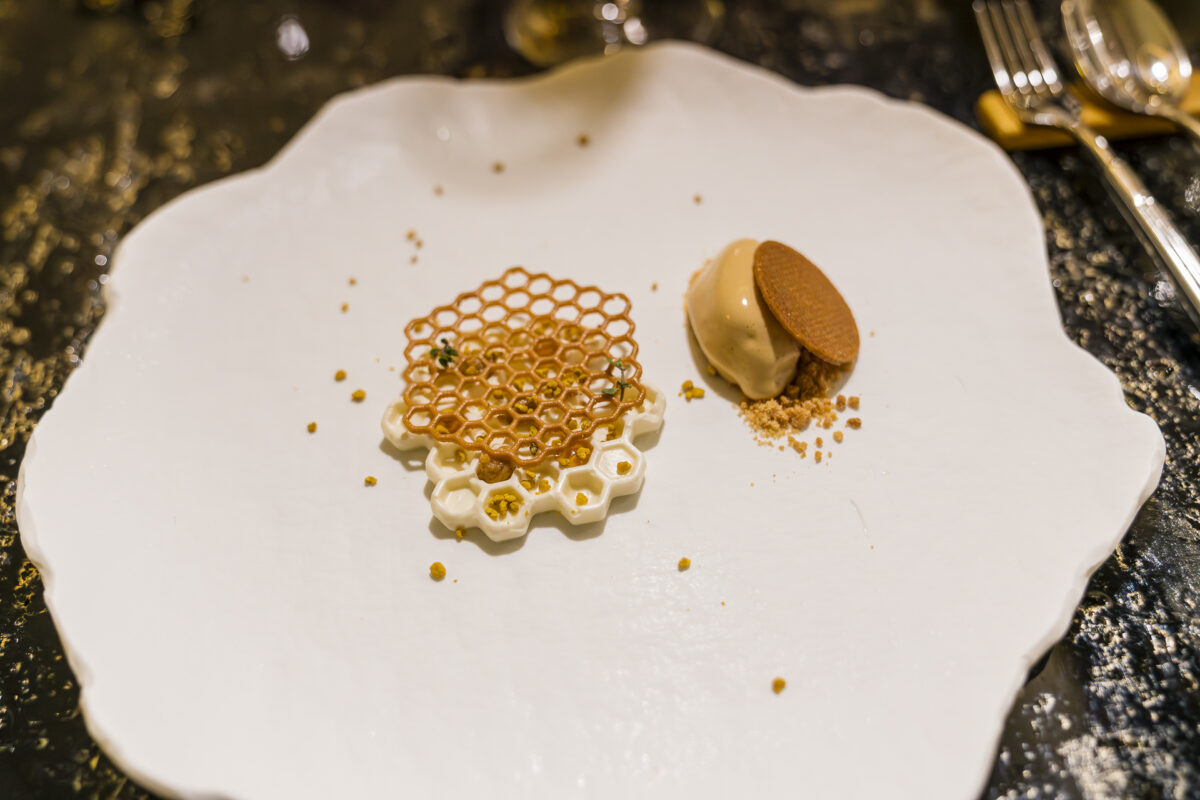
Hostaria Ducale | Salita di S. Matteo, 29/R | Closed on Wednesday | À la carte and menus | Reservation recommended | more information hostariaducale.it
Our hotel tip for Genoa
We stayed at the Grand Hotel Savoia (partner link) 50 m from the Genova P. Principe train station. Opened in 1897, the hotel is one of the oldest hotels in Italy with a history of almost over 120 years and lets you revel in times gone by with its pompous interior. The room facilities were less dusty than we expected and the location was ideal for our purposes (close to the train station, right at the starting point to the old town). We paid around 210 CHF per night for a classic double room, which is an okay price-performance ratio for the time of travel (Easter), the comfort offered (5-star hotel) and the location.
More tips for your city trip to Genoa
Genoa is easily accessible by train from Switzerland. We took the direct train from Zurich to Genoa in 5 hours and 19 minutes. Alternatively, there are slightly faster connections (5 h 4 min), which require a change in Milan. The Genova P. Principe train station is located right on the edge of the old town. From here we discovered all the mentioned places on foot.
Since many sights are located in a compact space, you can get a first good overview of Genoa with a time budget of two days. We had spent three nights on site and – except for the detour to Nervi – managed almost everything we had planned. If you want to include excursions in the region in your sightseeing program, you can also spend a good four to five days (or more) in Genoa.
We were in Genoa over Easter in April and found it ideal in terms of temperatures. In general, I would think that April to June as well as September and October are suitable for a detour to Genoa. If you travel there in the summer months (July/August), you have to expect hot and humid temperatures. In August, “Ferragosto” is also closed or has reduced opening hours. And if you like to go on a city trip in the low season, you can of course also plan a trip to Genoa between November and February. If you’re lucky, you might even find the longed-for sunshine here at this time of year.
If you plan to visit more than one of the city’s museums within 24 hours, you can save money by buying the Genova Museum Card. For a price of 15 euros, you get access to 28 municipal and 9 non-municipal museums. In addition, public transport (AMT) can be used at no extra charge. More information: museum card
More tips for the region
Genoa offers a great base to discover the fantastic Ligurian coast. Currently, the direct train connection from Switzerland not only leads to Genoa, but also to the charming coastal town of Sestri Levante. In any case, it was not the last trip to this corner of Italy for us.


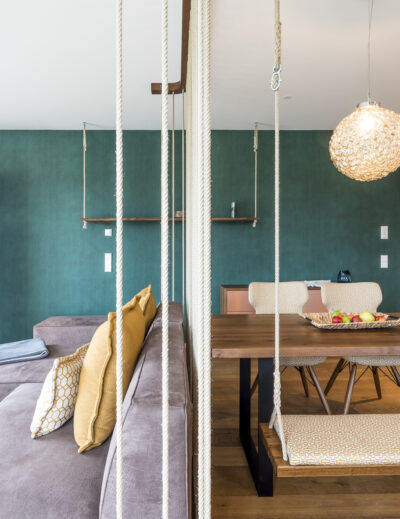
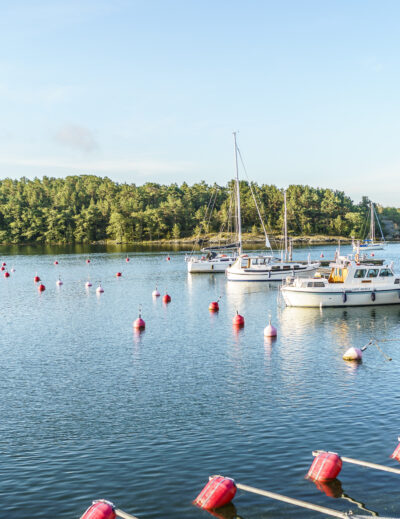
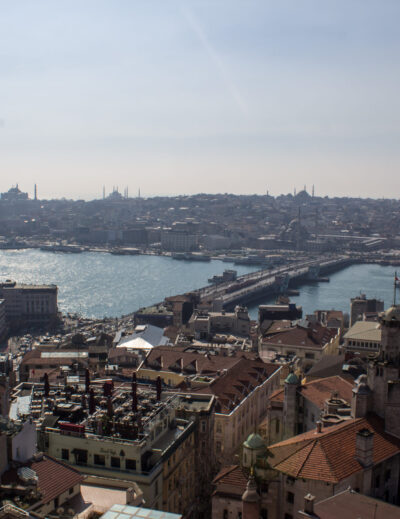
Leave a Reply